- The Maltese Falcon (1941)
- Casablanca (1942)
- Sunset Boulevard (1950)
- D.O.A. (1949)
- Double Indemnity (1944)
- Invasion of the Body Snatchers (1956)
- The 39 Steps (1935)
- The Lady from Shanghai (1947)
- Psycho (1960)
- Kiss Me Deadly (1955)
- Angel Face (1952)
- I Am a Fugitive from a Chain Gang (1932)
- The Manchurian Candidate (1962)
- Citizen Kane (1941)
- On the Waterfront (1954)
- The Killers (1946)
- The Garment Jungle (1957)
- The Magnificent Ambersons (1942)
- The Spy Who Came in from the Cold (1965)
- My Cousin Rachel (1952)
- Mirage (1965)
- Night of the Living Dead (1968)
- Kiss the Blood Off My Hands (1948)
- The Asphalt Jungle (1950)
- The Big Sleep (1946)
- The Sniper (1952)
- Black Angel (1946)
- Witness for the Prosecution (1957)
- The Honeymoon Killers (1970)
- The Naked City (1948)
- The Strange Love of Martha Ivers (1946)
- A Streetcar Named Desire (1951)
- The Big Knife (1955)
- White Heat (1949)
- Anatomy of a Murder (1959)
- À bout de souffle (1960)
- Paranoiac (1963)
- The Killing (1956)
- The Glass Key (1942)
- The Man Who Shot Liberty Valance (1962)
- Les diaboliques (1955)
- Nancy Drew Quadrilogy (1938)
- Lady in the Lake (1946)
- His Kind of Woman (1951)
- Ten Little Indians (1965)
 This is the grandfather of the film noir genre. Humphrey Bogart will always be iconic as Sam Spade, the
anti-hero private dick everybody imagines when they read the pulp detective stories. The cinematography is
top-notch, the script is marvelously done, and the mood can't be any more noirish. It's "the stuff that
dreams are made of."
This is the grandfather of the film noir genre. Humphrey Bogart will always be iconic as Sam Spade, the
anti-hero private dick everybody imagines when they read the pulp detective stories. The cinematography is
top-notch, the script is marvelously done, and the mood can't be any more noirish. It's "the stuff that
dreams are made of."
 My choice for the number one film of all time is made easy by Casablanca which is the most quotable with
some of the best lines ever written. This one has it all, and it's just perfect, perfect, perfect every step of
the way. Humphrey Bogart, Ingrid Bergman, Claude Rains, and Paul Henreid will always have a place in cinema
history. Movies come and go, but there's only one Casablanca.
My choice for the number one film of all time is made easy by Casablanca which is the most quotable with
some of the best lines ever written. This one has it all, and it's just perfect, perfect, perfect every step of
the way. Humphrey Bogart, Ingrid Bergman, Claude Rains, and Paul Henreid will always have a place in cinema
history. Movies come and go, but there's only one Casablanca.
 To refuse to acknowledge Sunset Boulevard as a masterpiece is to commit a crime in film appreciation.
William Holden is superb, dashing, and handsome, but it's Gloria Swanson who steals the limelight in every
scene. Timeless and beautiful, she has brilliant lines and even more brilliant scenes.
To refuse to acknowledge Sunset Boulevard as a masterpiece is to commit a crime in film appreciation.
William Holden is superb, dashing, and handsome, but it's Gloria Swanson who steals the limelight in every
scene. Timeless and beautiful, she has brilliant lines and even more brilliant scenes.
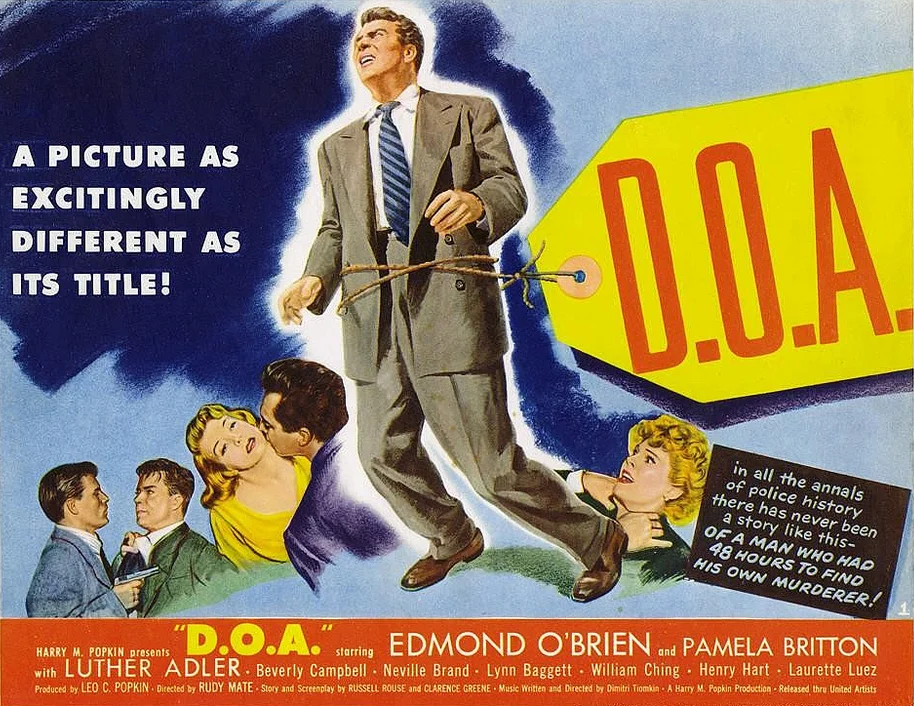 If there's an automatic must-see film noir, it's D.O.A. with Edmond O'Brien. Shot on location in
San Francisco and Los Angeles, it's a brilliant movie, one of the rarest with a strong start and a strong finish.
The gist of the story is unbelievable which goes like this: "Frank Bigelow, told he's been poisoned and has
only a few days to live, tries to find out who killed him and why." If that's not compelling enough, then nothing
else is.
If there's an automatic must-see film noir, it's D.O.A. with Edmond O'Brien. Shot on location in
San Francisco and Los Angeles, it's a brilliant movie, one of the rarest with a strong start and a strong finish.
The gist of the story is unbelievable which goes like this: "Frank Bigelow, told he's been poisoned and has
only a few days to live, tries to find out who killed him and why." If that's not compelling enough, then nothing
else is.
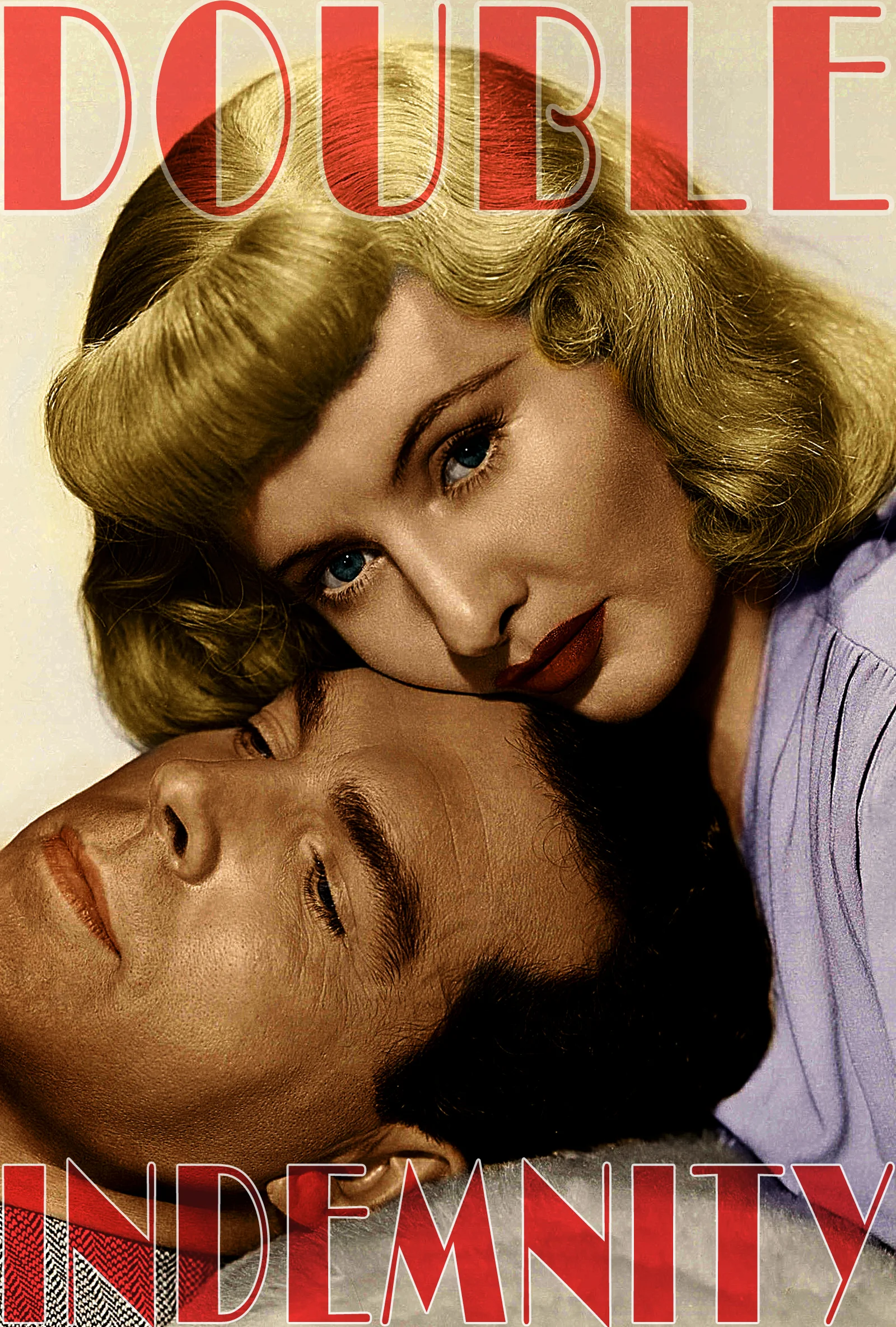 Double Indemnity is a top five film noir with a great femme fatale in Barbara Stanwyck.
Fred MacMurray does his part well. There's a bit of a playful repartee between him and her that seals the deal
what this movie will be all about. Edward G. Robinson, as great as he has been in so many films, gives an
outstanding performance.
Double Indemnity is a top five film noir with a great femme fatale in Barbara Stanwyck.
Fred MacMurray does his part well. There's a bit of a playful repartee between him and her that seals the deal
what this movie will be all about. Edward G. Robinson, as great as he has been in so many films, gives an
outstanding performance.
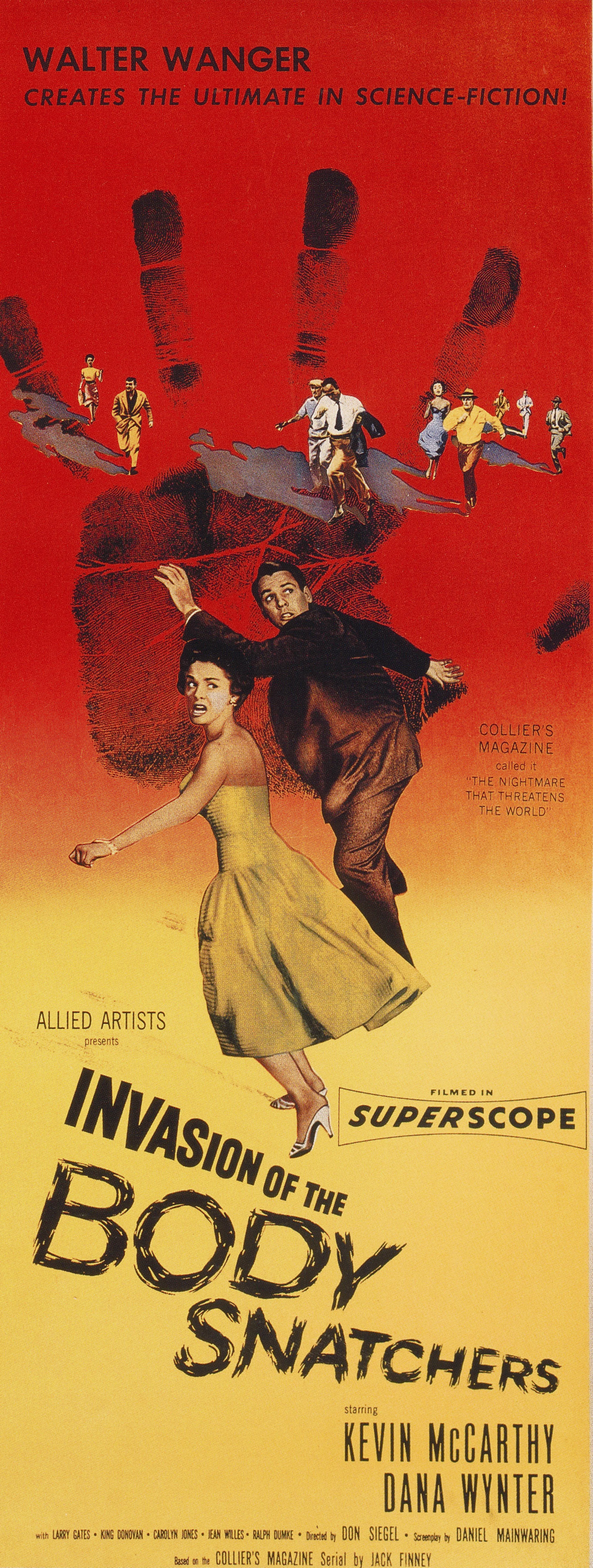 Anyone asking me this question, "Can you tell me the greatest horror movie ever made?", my answer will always be
Invasion of the Body Snatchers. It's bar none the best I've ever seen. There's no monster, blood, gore, or
violence whatsoever. It's just the beautiful use of subtlety to create frightening scenes.
Anyone asking me this question, "Can you tell me the greatest horror movie ever made?", my answer will always be
Invasion of the Body Snatchers. It's bar none the best I've ever seen. There's no monster, blood, gore, or
violence whatsoever. It's just the beautiful use of subtlety to create frightening scenes.
 The most definitive Hitchcock picture made, The 39 Steps is the gold standard that many espionage
pictures have failed to match. Robert Donat has never been better, and Lucie Mannheim deserves credit for
setting the tone. The formula of Alfred Hitchcock's many films can be readily found in The 39 Steps.
The most definitive Hitchcock picture made, The 39 Steps is the gold standard that many espionage
pictures have failed to match. Robert Donat has never been better, and Lucie Mannheim deserves credit for
setting the tone. The formula of Alfred Hitchcock's many films can be readily found in The 39 Steps.
 If the wunderkind said, "My name is Orson Welles. I invented the word 'genius' and defined it," I would've
believed him. One of the fastest-paced pictures, The Lady from Shanghai is that good and twisting. The
most famous scene is the Hall of Mirrors which is something to behold. There's nothing like it. Once again,
that's the genius of Orson Welles.
If the wunderkind said, "My name is Orson Welles. I invented the word 'genius' and defined it," I would've
believed him. One of the fastest-paced pictures, The Lady from Shanghai is that good and twisting. The
most famous scene is the Hall of Mirrors which is something to behold. There's nothing like it. Once again,
that's the genius of Orson Welles.
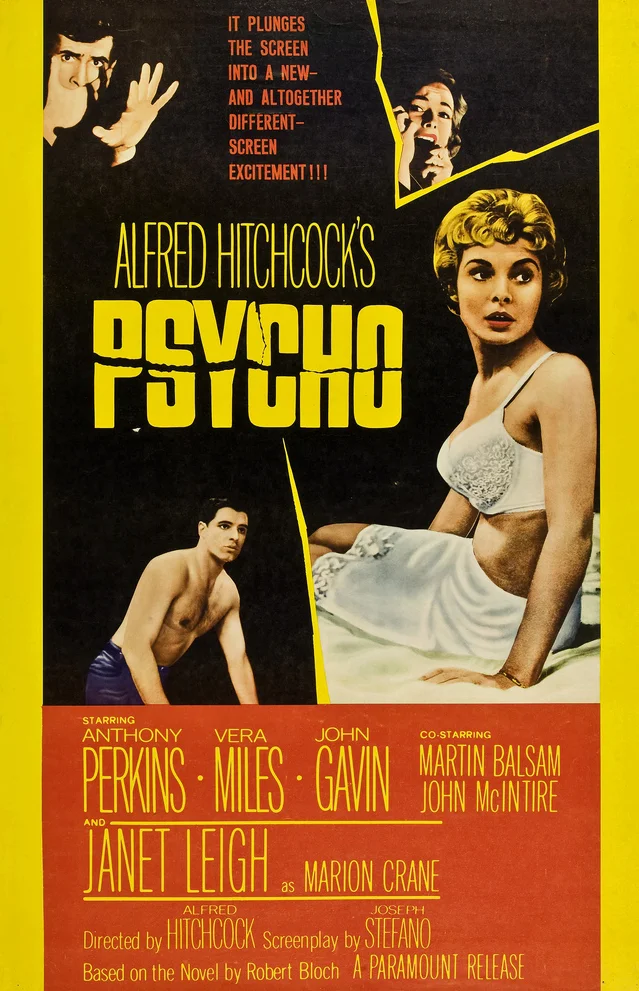 This psycho-sexual thriller went on to become the game changer of the slasher genre. Taking a shower would never
be the same again. Poor Marion Crane, she was the principal character for forty-eight minutes into the film and,
all of a sudden, got bumped off in one of the greatest and most shocking scenes in cinema history. There's no
actor who played a more famous villain than Anthony Perkins as Norman Bates. Alfred Hitchcock was truly the
Master of Suspense.
This psycho-sexual thriller went on to become the game changer of the slasher genre. Taking a shower would never
be the same again. Poor Marion Crane, she was the principal character for forty-eight minutes into the film and,
all of a sudden, got bumped off in one of the greatest and most shocking scenes in cinema history. There's no
actor who played a more famous villain than Anthony Perkins as Norman Bates. Alfred Hitchcock was truly the
Master of Suspense.
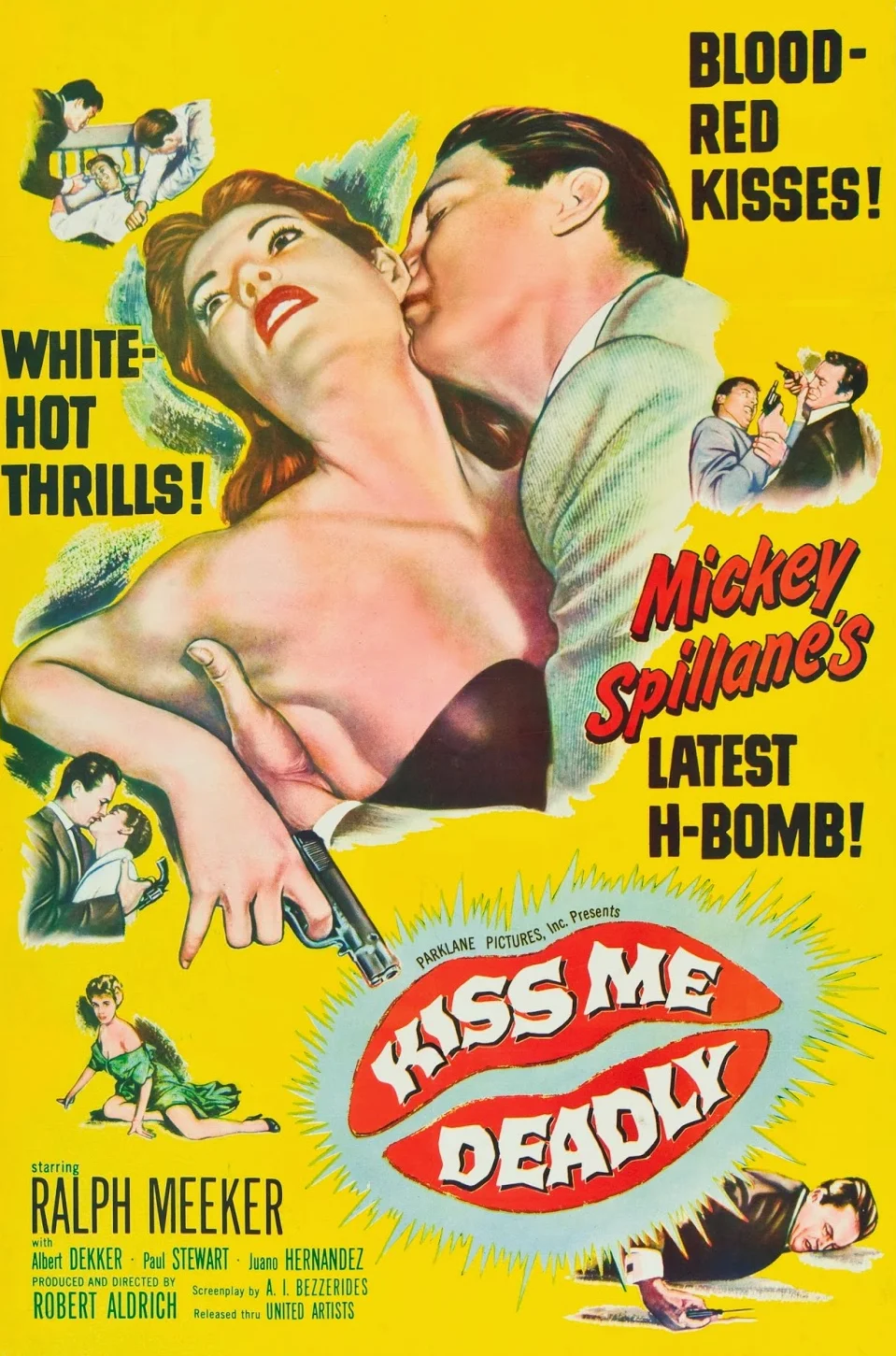 After a slow start, Kiss Me Deadly picks up the pace and gets the ball rolling as soon as Mike Hammer
delves deeper into the mystery of the girl's disappearance. It gets more and more interesting as time goes on
until the final ending which turns out to be unexpected. Tough characters appear one by one throughout. It's
gritty on the noir level because, quite simply, people just die. Furthermore, they're pushed over for
selfish aims and thus mercilessly killed.
After a slow start, Kiss Me Deadly picks up the pace and gets the ball rolling as soon as Mike Hammer
delves deeper into the mystery of the girl's disappearance. It gets more and more interesting as time goes on
until the final ending which turns out to be unexpected. Tough characters appear one by one throughout. It's
gritty on the noir level because, quite simply, people just die. Furthermore, they're pushed over for
selfish aims and thus mercilessly killed.
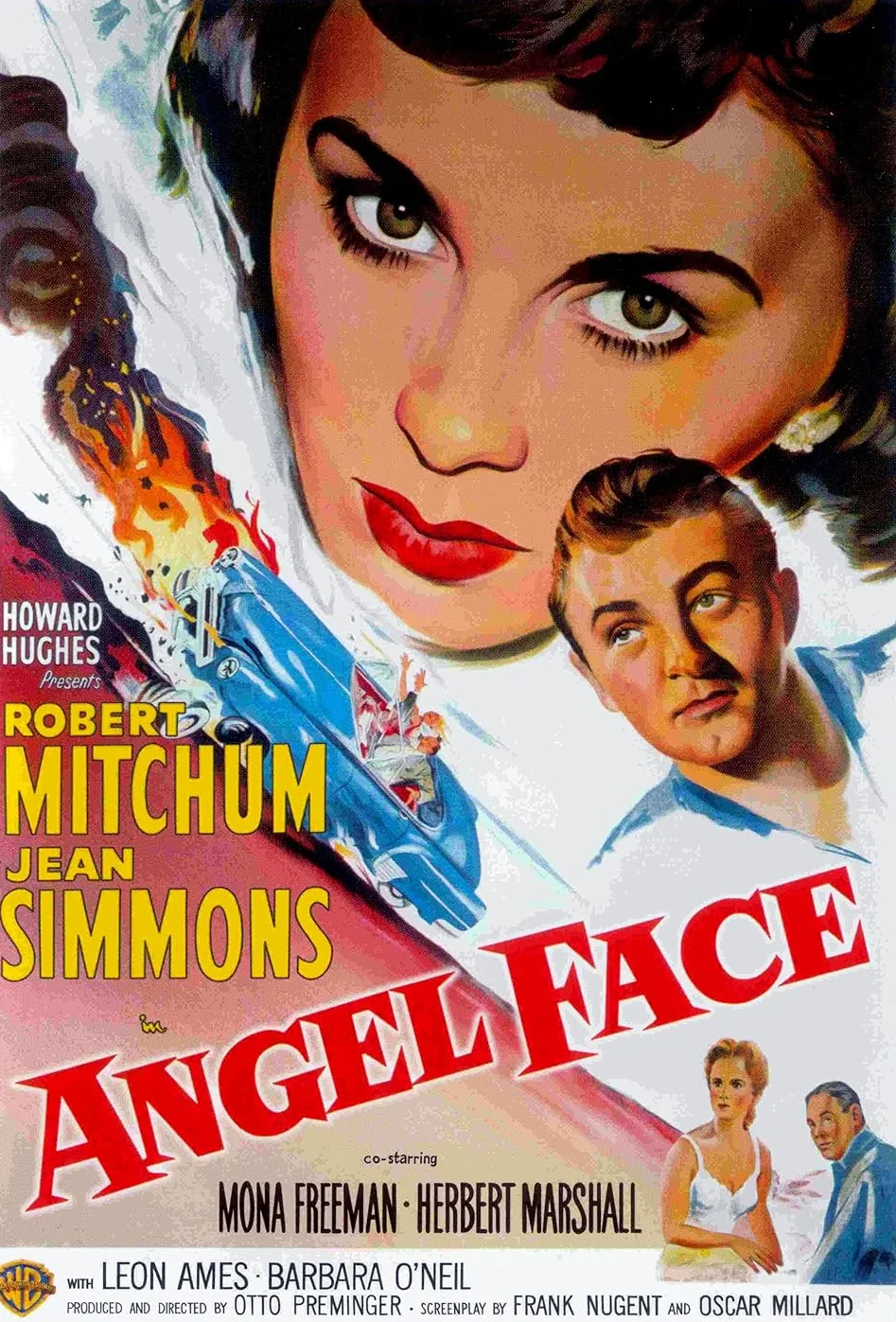 Robert Mitchum sure gets mixed up with femmes fatales so easily. Is he dumb or what? This time, it's
Jean Simmons for Angel Face. It's a finely directed picture by Otto Preminger, one of his best.
Twenty-three at the time of filming, Jean Simmons dominates the show from start to finish while Robert Mitchum
is happy to oblige. The ending is a shocker.
Robert Mitchum sure gets mixed up with femmes fatales so easily. Is he dumb or what? This time, it's
Jean Simmons for Angel Face. It's a finely directed picture by Otto Preminger, one of his best.
Twenty-three at the time of filming, Jean Simmons dominates the show from start to finish while Robert Mitchum
is happy to oblige. The ending is a shocker.
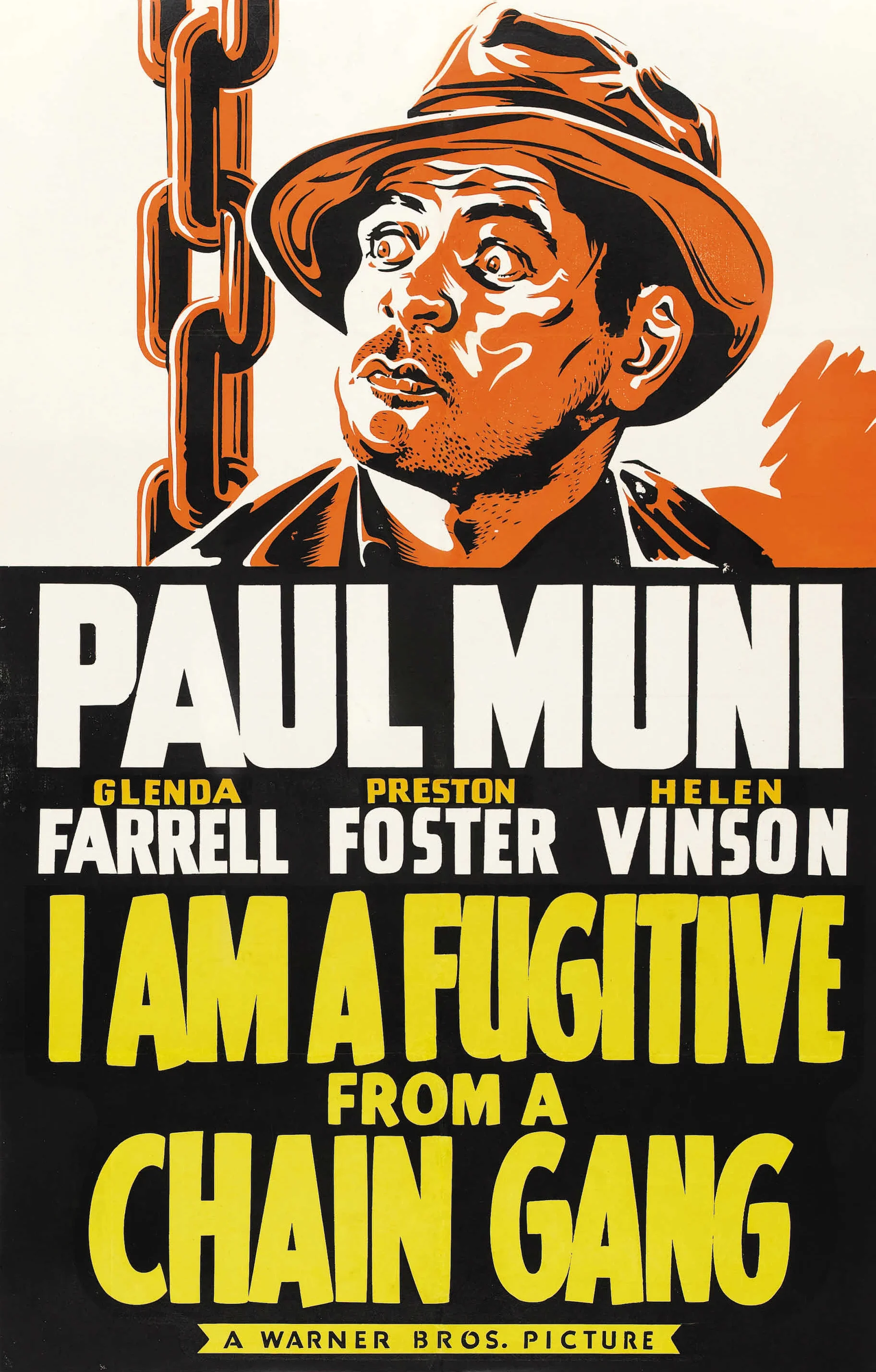 I Am a Fugitive from a Chain Gang is a heartfelt story about a decent man, down on his luck, who dreams
of being a civil engineer so he can build roads and bridges. The on-screen portrayal of the chain gang in the
Deep South was enough for the public to denounce the practice, and forever gone that was by 1955. Paul Muni's
performance is more than outstanding, and the haunting ending is timeless.
I Am a Fugitive from a Chain Gang is a heartfelt story about a decent man, down on his luck, who dreams
of being a civil engineer so he can build roads and bridges. The on-screen portrayal of the chain gang in the
Deep South was enough for the public to denounce the practice, and forever gone that was by 1955. Paul Muni's
performance is more than outstanding, and the haunting ending is timeless.
 The Manchurian Candidate is a brilliantly made political thriller picture with the most complex editing
imaginable. Now, remember the book was written in 1959 and the film was released in 1962 which was more than
one year before JFK's assassination. The President knew all about it and gave the filmmakers his expressed
approval to go ahead with the project. Pretty chilling stuff.
The Manchurian Candidate is a brilliantly made political thriller picture with the most complex editing
imaginable. Now, remember the book was written in 1959 and the film was released in 1962 which was more than
one year before JFK's assassination. The President knew all about it and gave the filmmakers his expressed
approval to go ahead with the project. Pretty chilling stuff.
 When Citizen Kane was released, Orson Welles reached the top of the mountain and became an immortal god
of cinema. Afterwards, he had nowhere to go but down...down he went hard. It puts everything about cinema into
perspective. An important film for numerous reasons, it's one of the best-shot works of art in terms of
storytelling through the power of cinematography. The controversy behind the scenes is the reason for its
mammoth reputation which makes the whole thing fascinating.
When Citizen Kane was released, Orson Welles reached the top of the mountain and became an immortal god
of cinema. Afterwards, he had nowhere to go but down...down he went hard. It puts everything about cinema into
perspective. An important film for numerous reasons, it's one of the best-shot works of art in terms of
storytelling through the power of cinematography. The controversy behind the scenes is the reason for its
mammoth reputation which makes the whole thing fascinating.
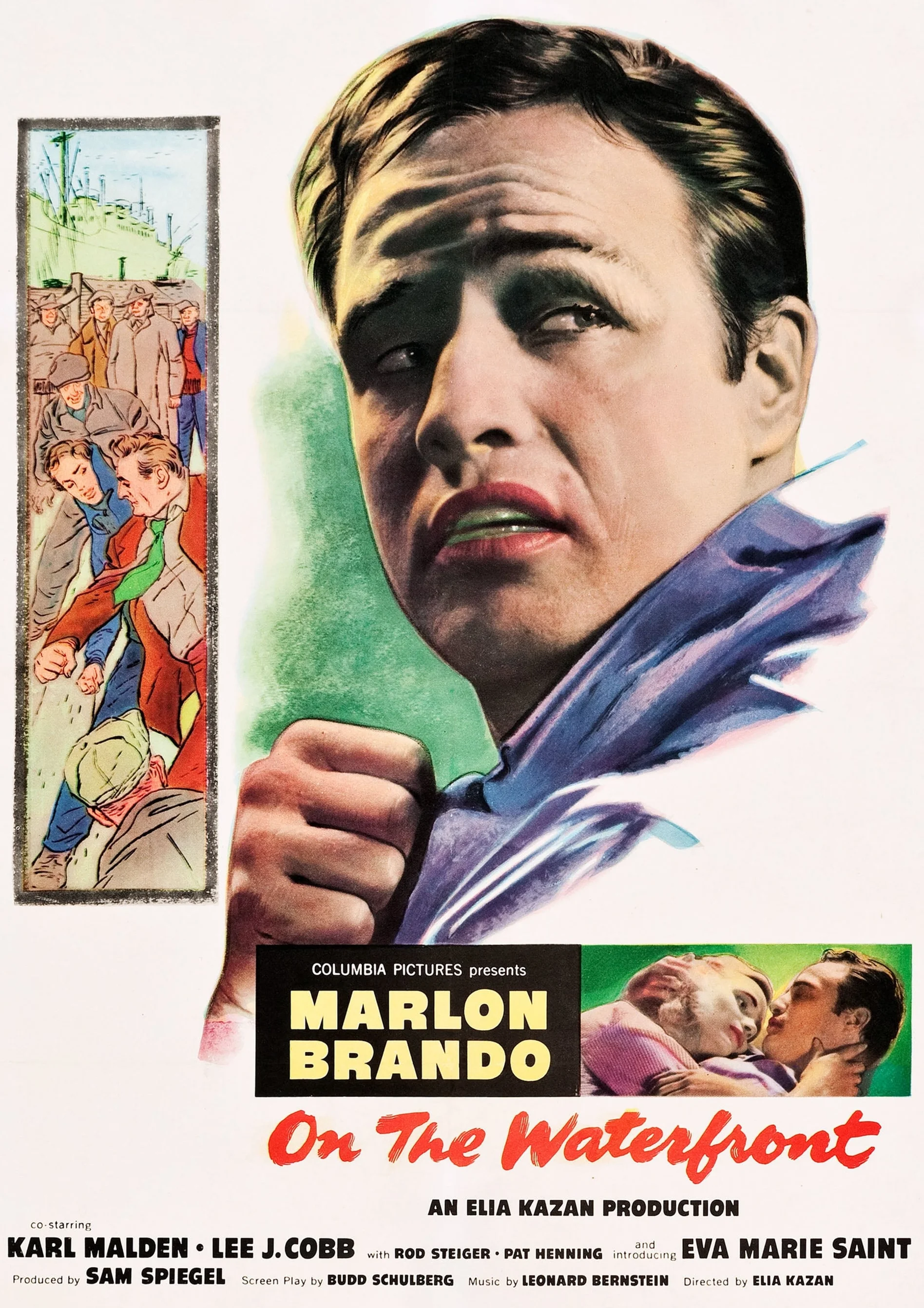 On the Waterfront is one of the most important, influential films made. The best and the greatest ever,
Marlon Brando is spectacular and is in a class of his own. Because of what he did, the landscape of acting
had been forever changed. Whenever I think of timeless movies with great performances, great scenes, and great
lines, On the Waterfront is among them.
On the Waterfront is one of the most important, influential films made. The best and the greatest ever,
Marlon Brando is spectacular and is in a class of his own. Because of what he did, the landscape of acting
had been forever changed. Whenever I think of timeless movies with great performances, great scenes, and great
lines, On the Waterfront is among them.
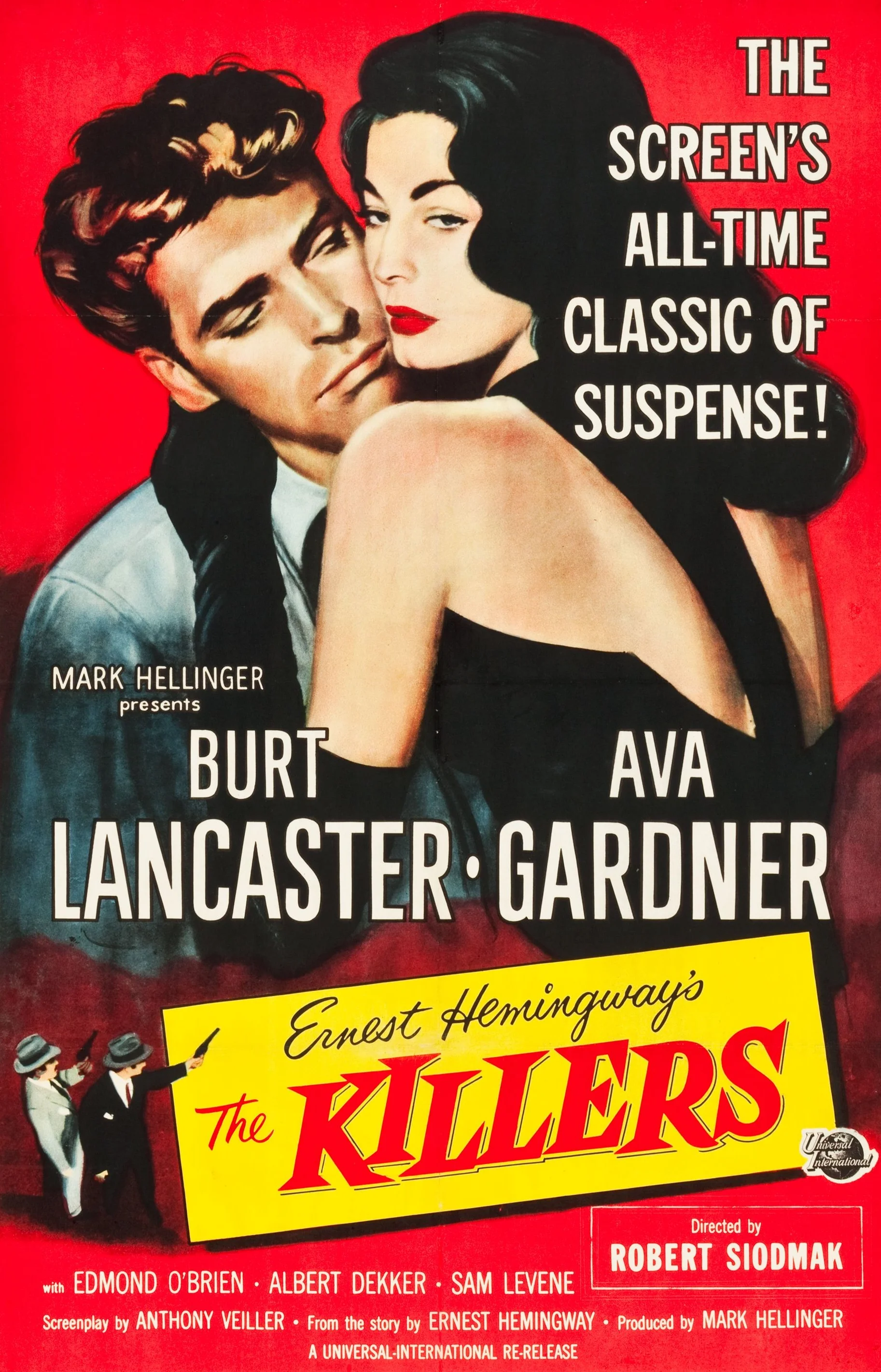 The Killers is a tough, gritty, and stylized film noir with wonderful performances, especially
by Edmond O'Brien. Ava Gardner is the femme fatale. It also features Burt Lancaster's screen debut.
Initially confusing, the story gets better over time with the narration style being reminiscent of
Citizen Kane. It helps a great deal when two tough guys are cast: William Conrad and Jack Lambert.
The Killers is a tough, gritty, and stylized film noir with wonderful performances, especially
by Edmond O'Brien. Ava Gardner is the femme fatale. It also features Burt Lancaster's screen debut.
Initially confusing, the story gets better over time with the narration style being reminiscent of
Citizen Kane. It helps a great deal when two tough guys are cast: William Conrad and Jack Lambert.
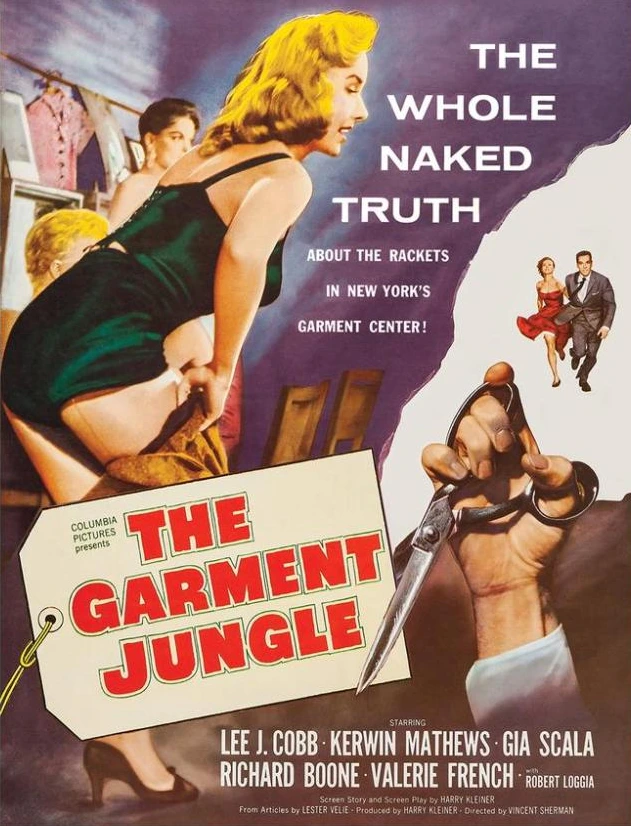 Lee J. Cobb may have played the same role once too many times, but he was perfectly cast as Walter Mitchell in
The Garment Jungle. It's a true film noir picture with tons of corruption in the background. Alan
Mitchell, an idealist, is shocked to find out about it and begins to realize his father may not be a principled
guy after all. Then again, he didn't want his son involved in the first place because he knew it's just tough,
uncompromising occupation with high level of stress. Armed with a strong script, the acting is terrific all
the way through with a bunch of unsavory characters.
Lee J. Cobb may have played the same role once too many times, but he was perfectly cast as Walter Mitchell in
The Garment Jungle. It's a true film noir picture with tons of corruption in the background. Alan
Mitchell, an idealist, is shocked to find out about it and begins to realize his father may not be a principled
guy after all. Then again, he didn't want his son involved in the first place because he knew it's just tough,
uncompromising occupation with high level of stress. Armed with a strong script, the acting is terrific all
the way through with a bunch of unsavory characters.
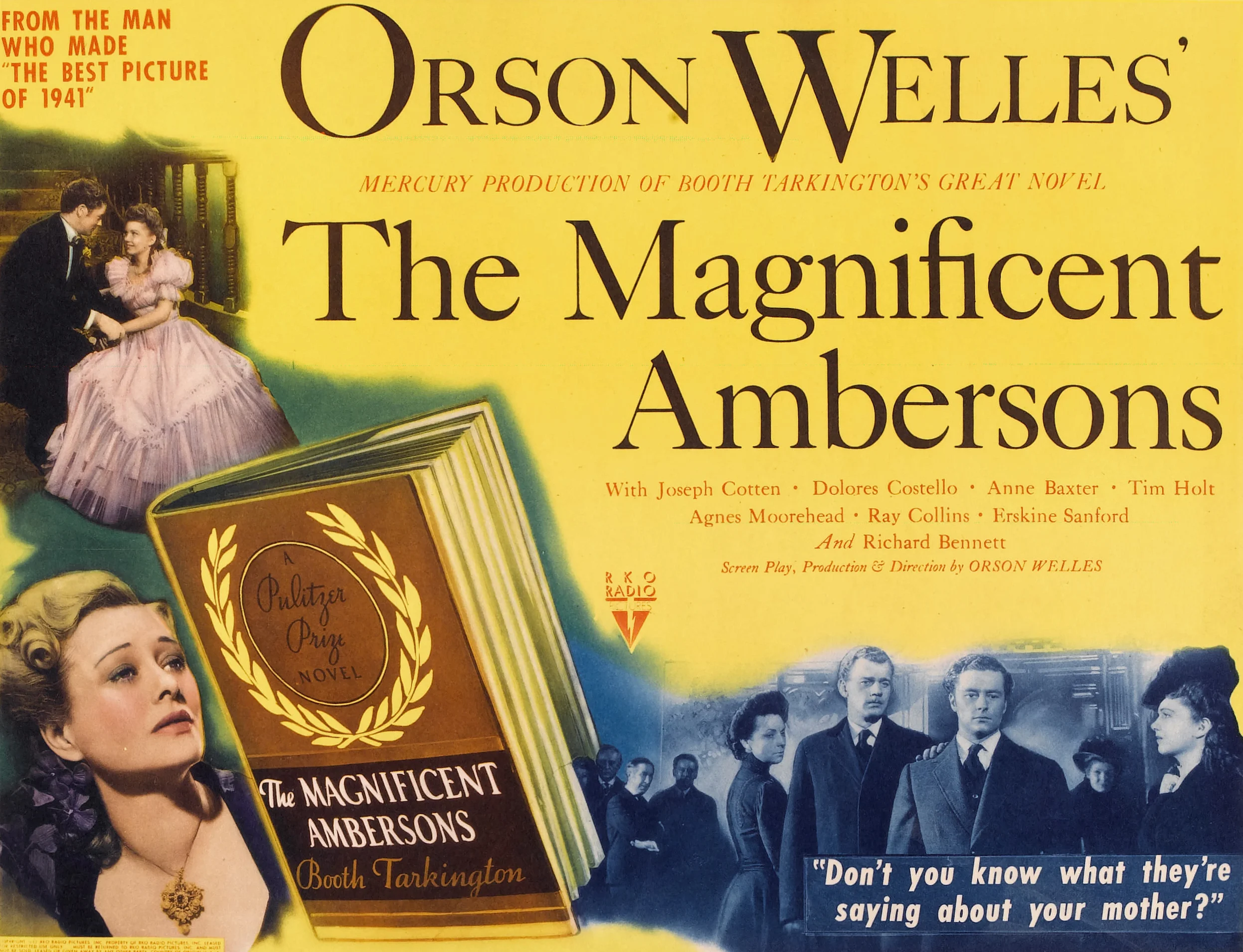 If you can't get enough of Citizen Kane, this one promises you more of the same. Written by Orson Welles
that's adapted from Booth Tarkington's novel, the story of The Magnificent Ambersons is sweeping,
innovative, and captivating which is coupled with a wonderful raconteur style. He was the master of advanced,
complicated scenes.
If you can't get enough of Citizen Kane, this one promises you more of the same. Written by Orson Welles
that's adapted from Booth Tarkington's novel, the story of The Magnificent Ambersons is sweeping,
innovative, and captivating which is coupled with a wonderful raconteur style. He was the master of advanced,
complicated scenes.
 Move over, James Bond...here comes a real spy by the name of Alec Leamas. Nominated for Best Actor Academy Award,
Richard Burton is devastatingly good as a "seedy, squalid" spy who has seen it all and is disgusted with life.
His performance is in the top two or three of his career.
Move over, James Bond...here comes a real spy by the name of Alec Leamas. Nominated for Best Actor Academy Award,
Richard Burton is devastatingly good as a "seedy, squalid" spy who has seen it all and is disgusted with life.
His performance is in the top two or three of his career.
 Making his debut in a Hollywood film. Richard Burton steals the show from start to finish. He's brilliant and
impossible to overlook. Mad, bad, and dangerous to know, Richard Burton would've made a very good Heathcliff.
For his efforts, he was rewarded with an Oscar nomination, the first of seven.
Making his debut in a Hollywood film. Richard Burton steals the show from start to finish. He's brilliant and
impossible to overlook. Mad, bad, and dangerous to know, Richard Burton would've made a very good Heathcliff.
For his efforts, he was rewarded with an Oscar nomination, the first of seven.
 Mirage accomplishes the impossible: start out poorly and recover to become thrilling. It's among
Gregory Peck's best films, easily beating out Spellbound. The genius is starting out abstractly but the
mystery is more cleared up when the next scene connects everything together in a Memento way except it
keeps going forward. As an added bonus unlike many Hitchcock's films, the exteriors were 100% shot on location
in New York City. The photography is consistently excellent, and the editing goes a long way, too.
Mirage accomplishes the impossible: start out poorly and recover to become thrilling. It's among
Gregory Peck's best films, easily beating out Spellbound. The genius is starting out abstractly but the
mystery is more cleared up when the next scene connects everything together in a Memento way except it
keeps going forward. As an added bonus unlike many Hitchcock's films, the exteriors were 100% shot on location
in New York City. The photography is consistently excellent, and the editing goes a long way, too.
 This is the one that started it all. George Romero will forever be remembered for Night of the Living Dead
which is an underrated American horror classic picture. Unintentional or not, it's also groundbreaking for casting
a black actor as the main protagonist who's intelligent with a lot of common sense. Unique is the use of radio
play to narrate what's happening at the moment.
This is the one that started it all. George Romero will forever be remembered for Night of the Living Dead
which is an underrated American horror classic picture. Unintentional or not, it's also groundbreaking for casting
a black actor as the main protagonist who's intelligent with a lot of common sense. Unique is the use of radio
play to narrate what's happening at the moment.
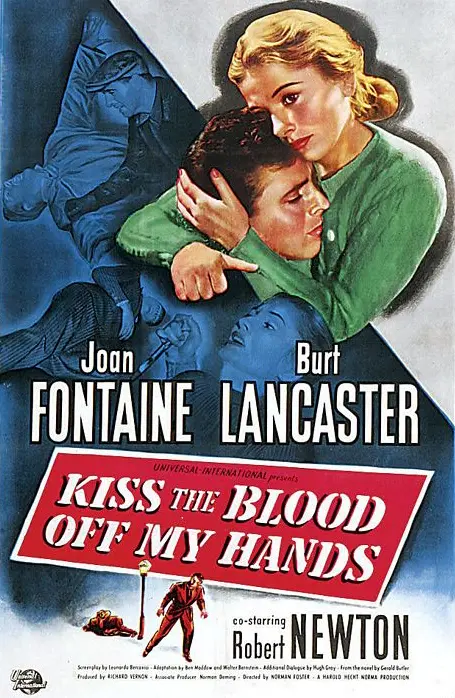 Burt Lancaster can be safely added to the top tier of film noir male icons which had been populated by
only two actors: Humphrey Bogart and Robert Mitchum. As Bill Saunders, he's extremely irresistible, and Joan
Fontaine can't have enough of him, hence their rock-solid chemistry. From start to finish, Russell Metty's
photography is unbelievable; it's not often that a genre is so well-represented this way.
Burt Lancaster can be safely added to the top tier of film noir male icons which had been populated by
only two actors: Humphrey Bogart and Robert Mitchum. As Bill Saunders, he's extremely irresistible, and Joan
Fontaine can't have enough of him, hence their rock-solid chemistry. From start to finish, Russell Metty's
photography is unbelievable; it's not often that a genre is so well-represented this way.
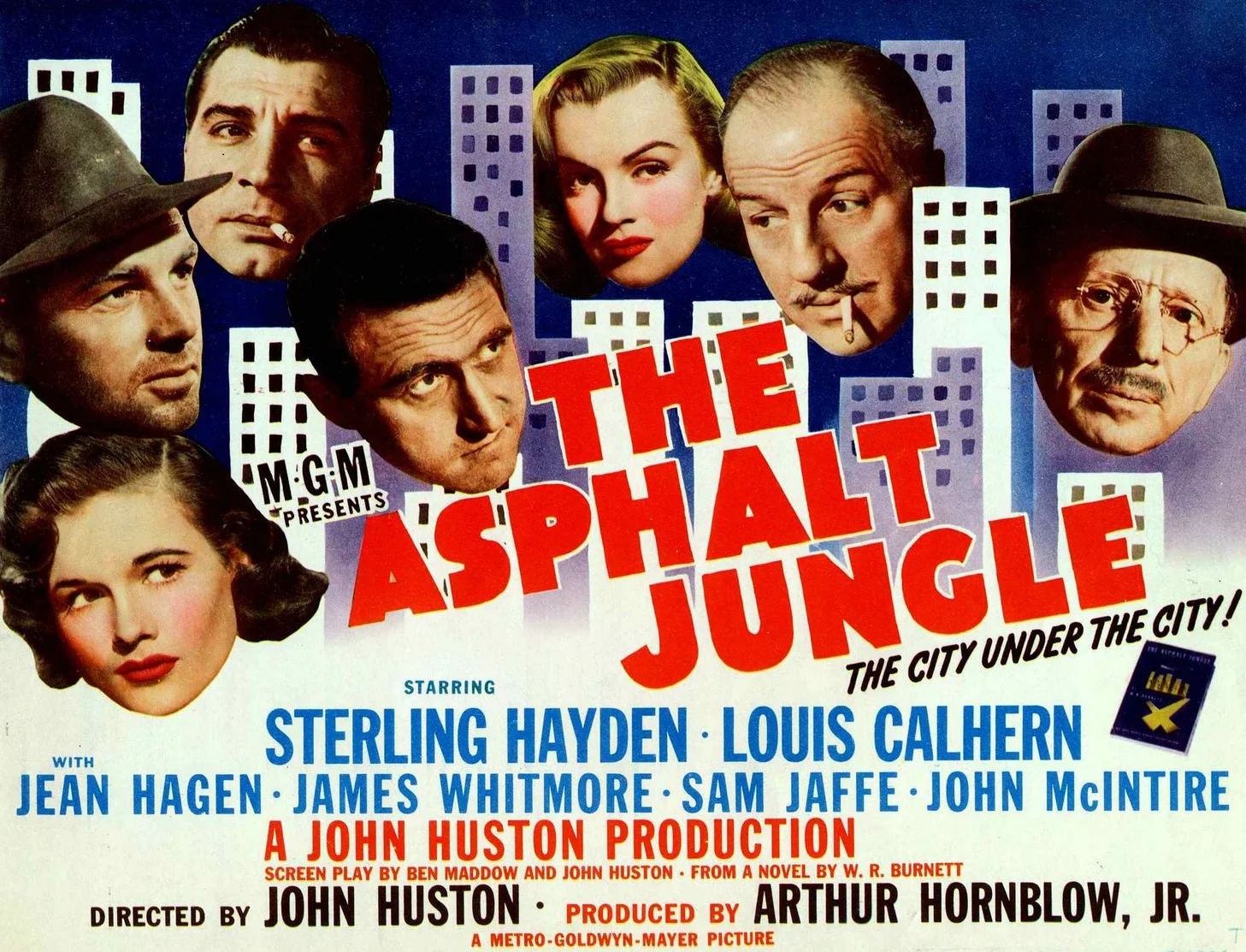 "After all, crime is only a left-handed form of human endeavor." This one is a towering giant among
films noirs. It portrays some of the most unsavory, tough-looking characters ever shown on screen.
Oft copied but never equalled, The Asphalt Jungle is the king of heist pictures.
"After all, crime is only a left-handed form of human endeavor." This one is a towering giant among
films noirs. It portrays some of the most unsavory, tough-looking characters ever shown on screen.
Oft copied but never equalled, The Asphalt Jungle is the king of heist pictures.
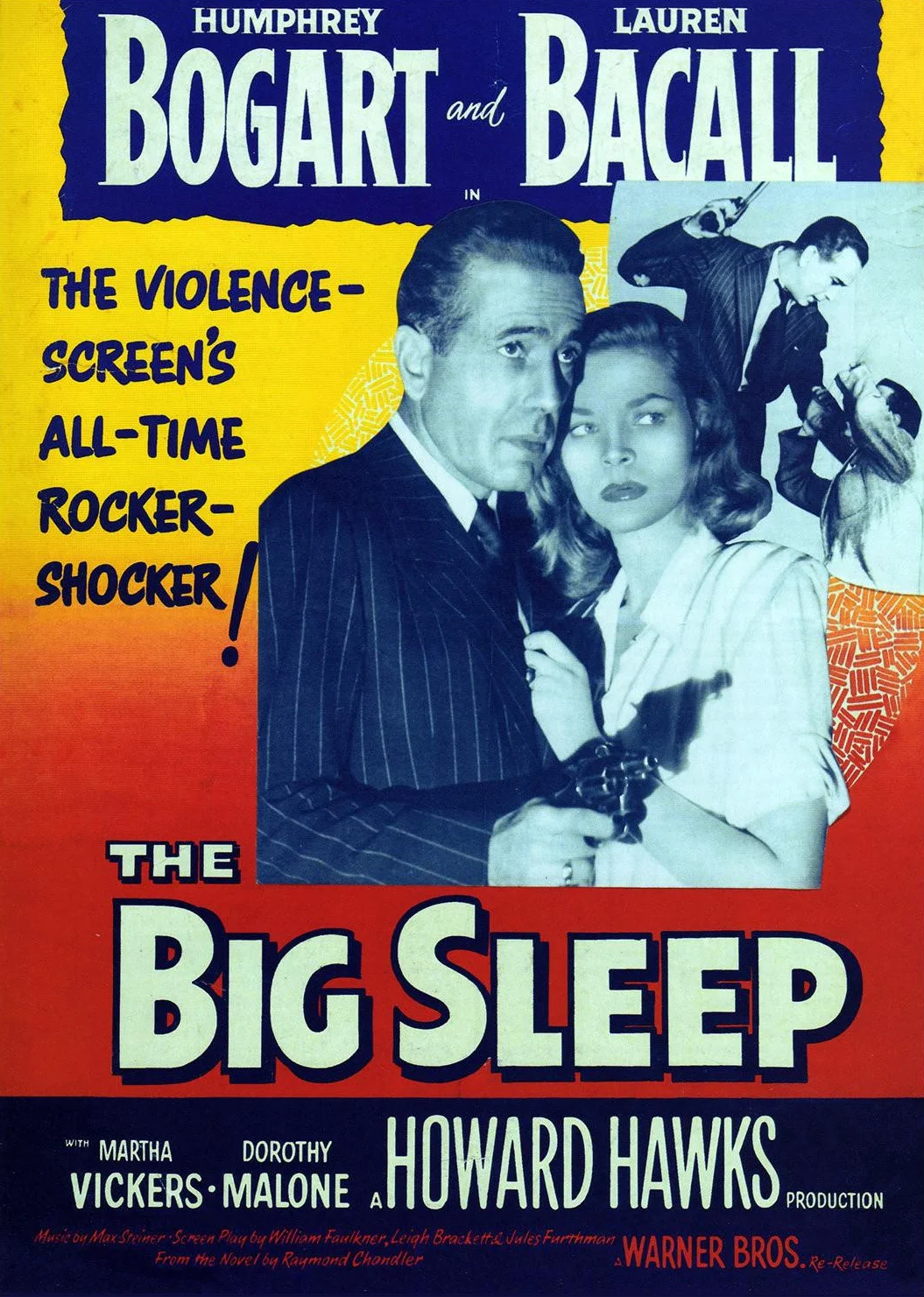 It was 1939 when Philip Marlowe appeared in Raymond Chandler's debut novel The Big Sleep. Seven years
later, Humphrey Bogart had the privilege of playing the hard-boiled detective for the cinematic adaptation of
the book, and the result is film noir heaven. No doubt, it's a good movie, but the plot is extremely
convoluted, even the screenwriters and Raymond Chandler himself couldn't figure out who killed Owen Taylor.
It was 1939 when Philip Marlowe appeared in Raymond Chandler's debut novel The Big Sleep. Seven years
later, Humphrey Bogart had the privilege of playing the hard-boiled detective for the cinematic adaptation of
the book, and the result is film noir heaven. No doubt, it's a good movie, but the plot is extremely
convoluted, even the screenwriters and Raymond Chandler himself couldn't figure out who killed Owen Taylor.
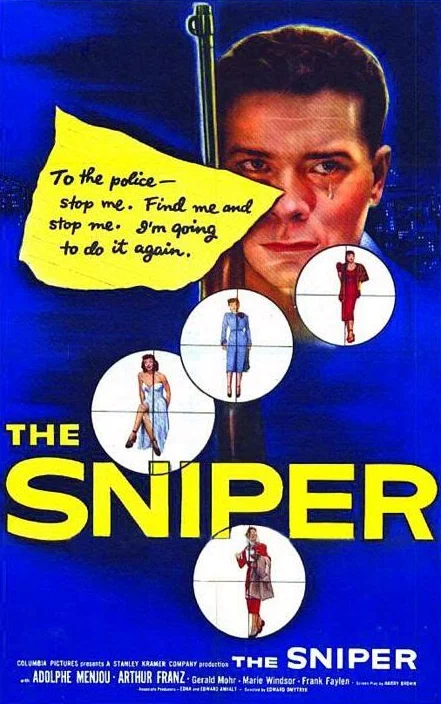 The Sniper is a well-shot film noir that's certainly ahead of its time. It's a fine performance
by Arthur Franz. Even better is the outstanding location shots of San Francisco. The city still ranks in the
top two when it comes to making films noirs with the other being Los Angeles. Most of the time, the
cinematography is perfect in the noir sense which was handled by Burnett Guffey who went on to win two
Oscars for From Here to Eternity and Bonnie and Clyde.
The Sniper is a well-shot film noir that's certainly ahead of its time. It's a fine performance
by Arthur Franz. Even better is the outstanding location shots of San Francisco. The city still ranks in the
top two when it comes to making films noirs with the other being Los Angeles. Most of the time, the
cinematography is perfect in the noir sense which was handled by Burnett Guffey who went on to win two
Oscars for From Here to Eternity and Bonnie and Clyde.
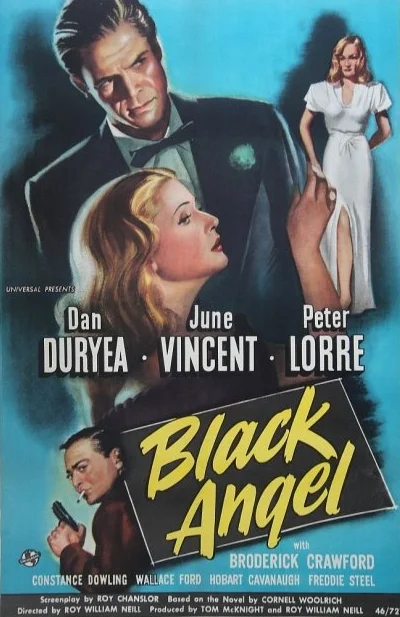 Dan Duryea and June Vincent light up the screen as possible star-crossed lovers. It's as if they belong together.
Nothing predictable happens, especially when the killer is revealed. Peter Lorre's presence is a bonus to make
the film darker than usual. Other characters are perfect to reflect the noirish setting of Los Angeles.
Dan Duryea and June Vincent light up the screen as possible star-crossed lovers. It's as if they belong together.
Nothing predictable happens, especially when the killer is revealed. Peter Lorre's presence is a bonus to make
the film darker than usual. Other characters are perfect to reflect the noirish setting of Los Angeles.
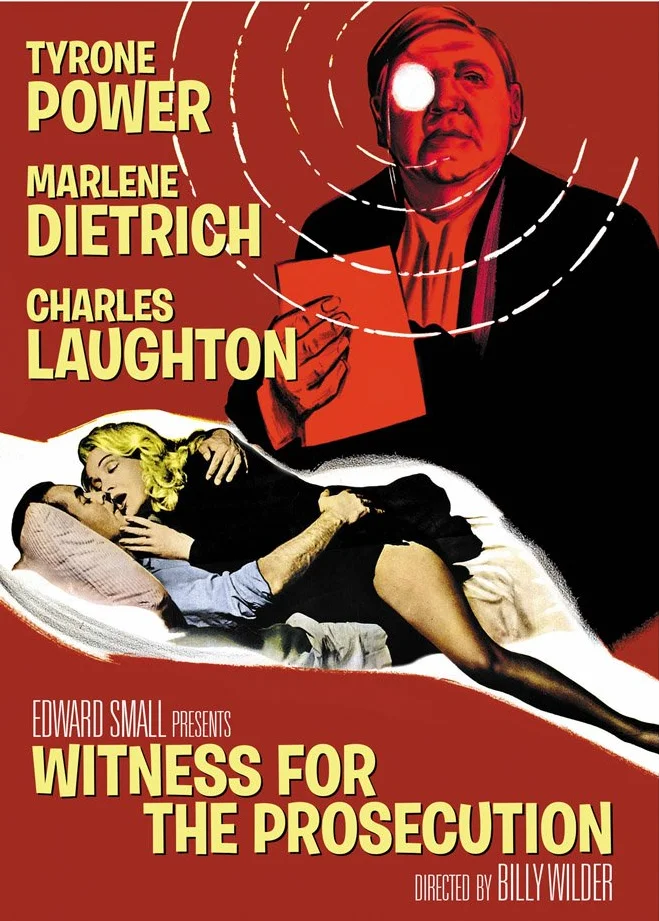 Adapted from a Agatha Christie's novel, Witness for the Prosecution is a classic Billy Wilder picture.
Charles Laughton gives the most outstanding performance while Marlene Dietrich is fantastic. The ending is the
cherry on top of the cake.
Adapted from a Agatha Christie's novel, Witness for the Prosecution is a classic Billy Wilder picture.
Charles Laughton gives the most outstanding performance while Marlene Dietrich is fantastic. The ending is the
cherry on top of the cake.
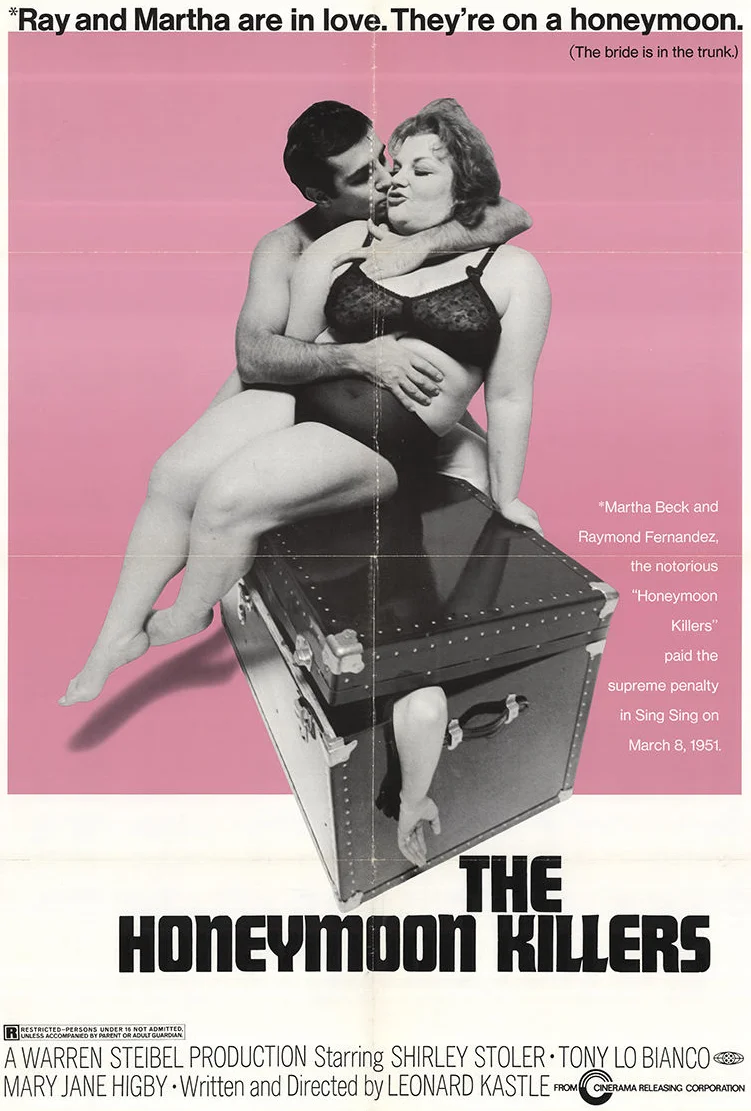 Do you want to see one of the most unusual pictures about a serial killer couple? Then, check out
The Honeymoon Killers. Its tagline reads: "Ray and Martha are in love. They're on a honeymoon. (The bride
is in the trunk.)" Tony Lo Bianco and Shirley Stoler will be forever remembered as Raymond Fernandez and Martha
Beck, aka "The Lonely Hearts Killers," who may have murdered at most twenty women during the late 40's before
being executed in their 30's.
Do you want to see one of the most unusual pictures about a serial killer couple? Then, check out
The Honeymoon Killers. Its tagline reads: "Ray and Martha are in love. They're on a honeymoon. (The bride
is in the trunk.)" Tony Lo Bianco and Shirley Stoler will be forever remembered as Raymond Fernandez and Martha
Beck, aka "The Lonely Hearts Killers," who may have murdered at most twenty women during the late 40's before
being executed in their 30's.
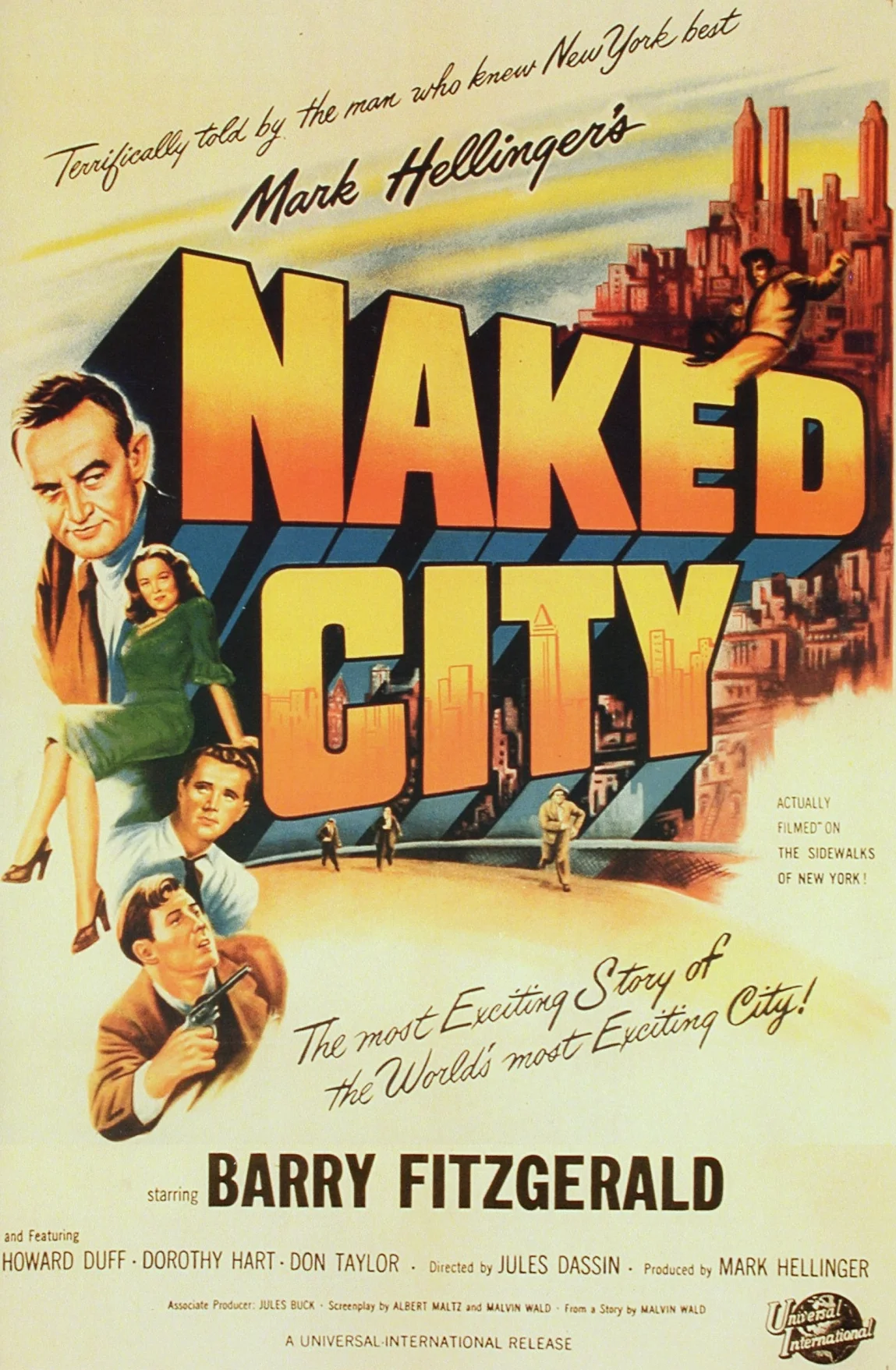 Crime pictures come and go without much notice, and many of them are so run-of-the-mill that the end result
hardly matters. But The Naked City is truly a cut above them, taking advantage of the New York City environs. One unique aspect is
the step-by-step explanatory manner of how crime is solved which is wonderfully narrated by Mark Hellinger. It's
the venerable Barry Fitzgerald who guides the viewer by how a detective thinks and processes the information.
Crime pictures come and go without much notice, and many of them are so run-of-the-mill that the end result
hardly matters. But The Naked City is truly a cut above them, taking advantage of the New York City environs. One unique aspect is
the step-by-step explanatory manner of how crime is solved which is wonderfully narrated by Mark Hellinger. It's
the venerable Barry Fitzgerald who guides the viewer by how a detective thinks and processes the information.
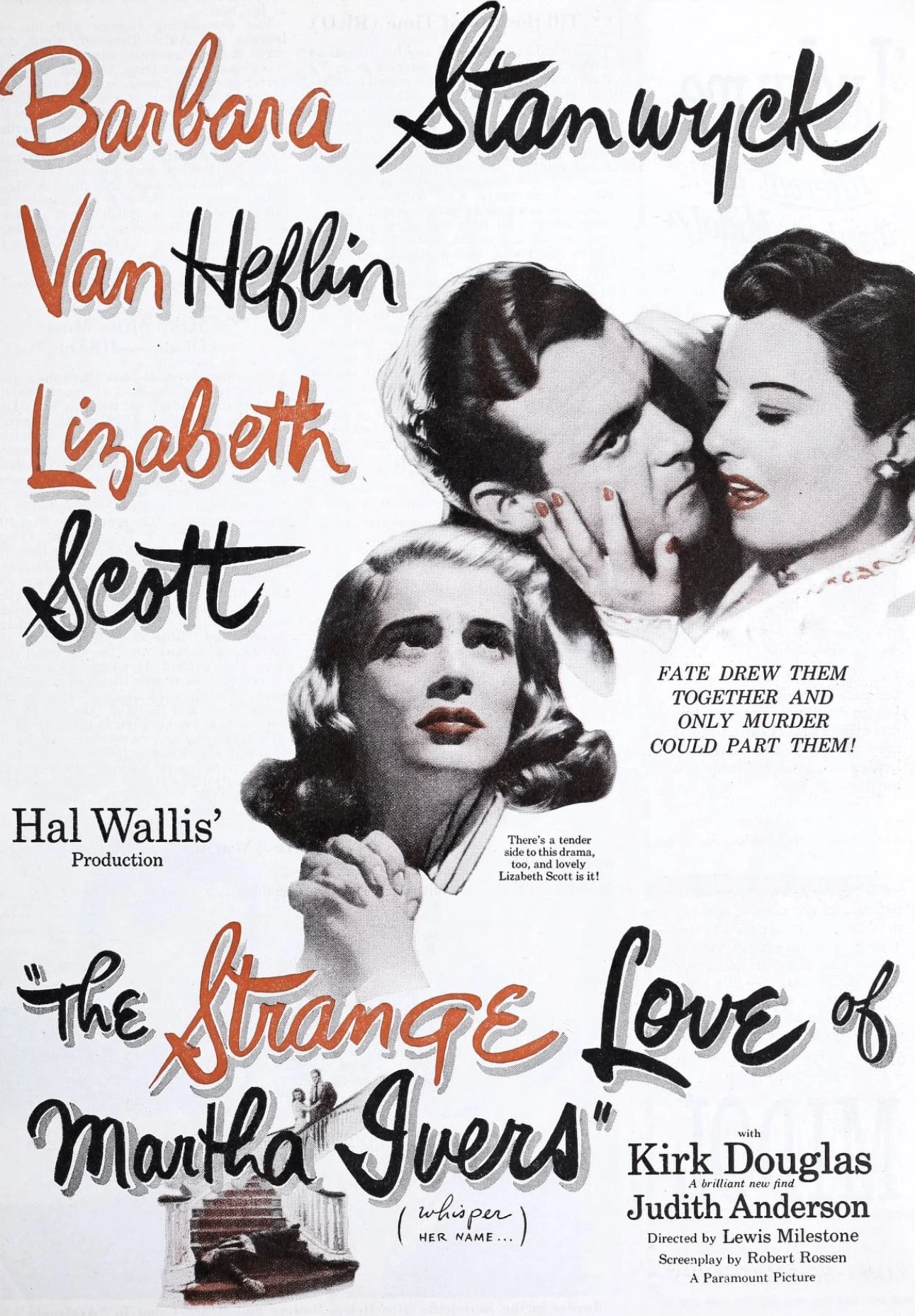 The Strange Love of Martha Ivers is an interesting film noir picture with classic cinematic elements
that remind me of Orson Welles' work. At first, Van Heflin didn't seem right for the role, but he did get better
over time and thus stole the show. In top form with shades of Double Indemnity, Barbara Stanwyck is
stunning while the oddly wimp Kirk Douglas makes his screen debut and Lizabeth Scott chips in as usual.
The Strange Love of Martha Ivers is an interesting film noir picture with classic cinematic elements
that remind me of Orson Welles' work. At first, Van Heflin didn't seem right for the role, but he did get better
over time and thus stole the show. In top form with shades of Double Indemnity, Barbara Stanwyck is
stunning while the oddly wimp Kirk Douglas makes his screen debut and Lizabeth Scott chips in as usual.
 Out is the Old Hollywood, in is the New Hollywood which happens all in one fell swoop through two hours of
A Streetcar Named Desire. Pitting Vivien Leigh's classical acting against Marlon Brando's realism, a
change of the guard has taken place. The battle of these two styles is unlike anything ever seen in cinema
history or since then, making everybody forget this film is supposed to be a theatrical play.
Out is the Old Hollywood, in is the New Hollywood which happens all in one fell swoop through two hours of
A Streetcar Named Desire. Pitting Vivien Leigh's classical acting against Marlon Brando's realism, a
change of the guard has taken place. The battle of these two styles is unlike anything ever seen in cinema
history or since then, making everybody forget this film is supposed to be a theatrical play.
 Since the release of Sunset Boulevard in 1950, Hollywood hadn't been dark again until The Big Knife
five years later. As strong as the cast is which includes three future Oscar winners, it's Jack Palance who
gives the most powerful performance which leads to the shocking ending.
Since the release of Sunset Boulevard in 1950, Hollywood hadn't been dark again until The Big Knife
five years later. As strong as the cast is which includes three future Oscar winners, it's Jack Palance who
gives the most powerful performance which leads to the shocking ending.
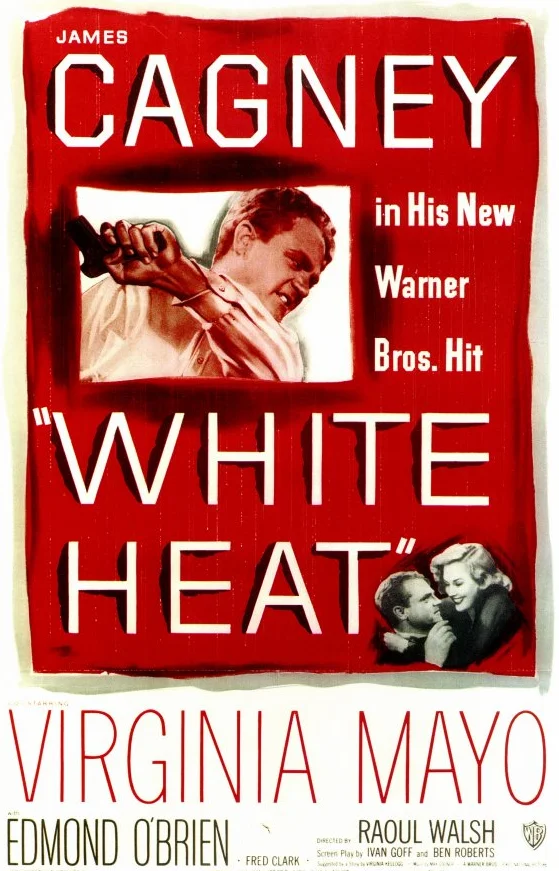 Powerful and mesmerizing, James Cagney gives the best performance of his career. His "Made it, Ma! Top of the
world!" scene in White Heat is among the all-time greatest endings. James Cagney's spontaneous reaction
after finding out what happened to his character's mother is another famous scene.
Powerful and mesmerizing, James Cagney gives the best performance of his career. His "Made it, Ma! Top of the
world!" scene in White Heat is among the all-time greatest endings. James Cagney's spontaneous reaction
after finding out what happened to his character's mother is another famous scene.
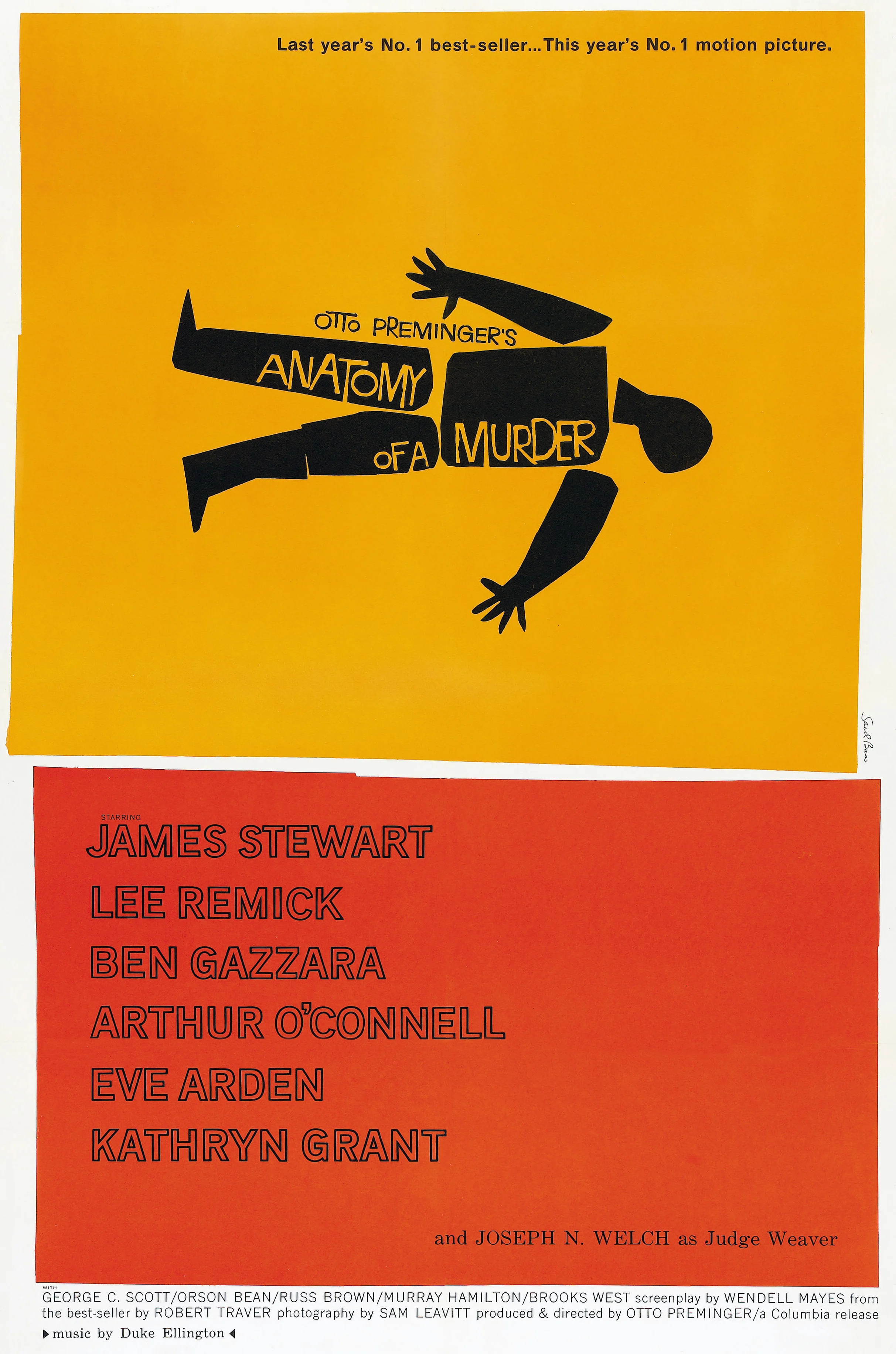 Full of brilliant writing, brilliant acting, and brilliant direction, Anatomy of a Murder may be almost
three hours long, but it's very fast-paced and serves as a strong example of courtroom procedure. James Stewart
gives one of the best performances of his career and is always riveting to watch during the trial.
Full of brilliant writing, brilliant acting, and brilliant direction, Anatomy of a Murder may be almost
three hours long, but it's very fast-paced and serves as a strong example of courtroom procedure. James Stewart
gives one of the best performances of his career and is always riveting to watch during the trial.
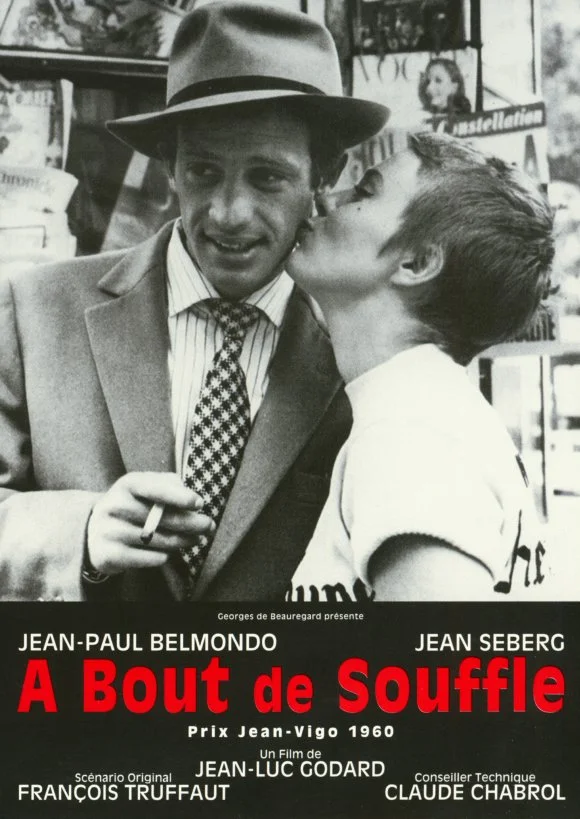 One of the greatest films in French cinema, À bout de souffle immortalized Jean-Paul Belmondo and Jean
Seberg. The jump cuts are famous and many classic scenes are seemingly improvisational, but there's
a James Dean quality that's exercised by the leading stars: infinite flexibility. It doesn't happen much in films.
One of the greatest films in French cinema, À bout de souffle immortalized Jean-Paul Belmondo and Jean
Seberg. The jump cuts are famous and many classic scenes are seemingly improvisational, but there's
a James Dean quality that's exercised by the leading stars: infinite flexibility. It doesn't happen much in films.
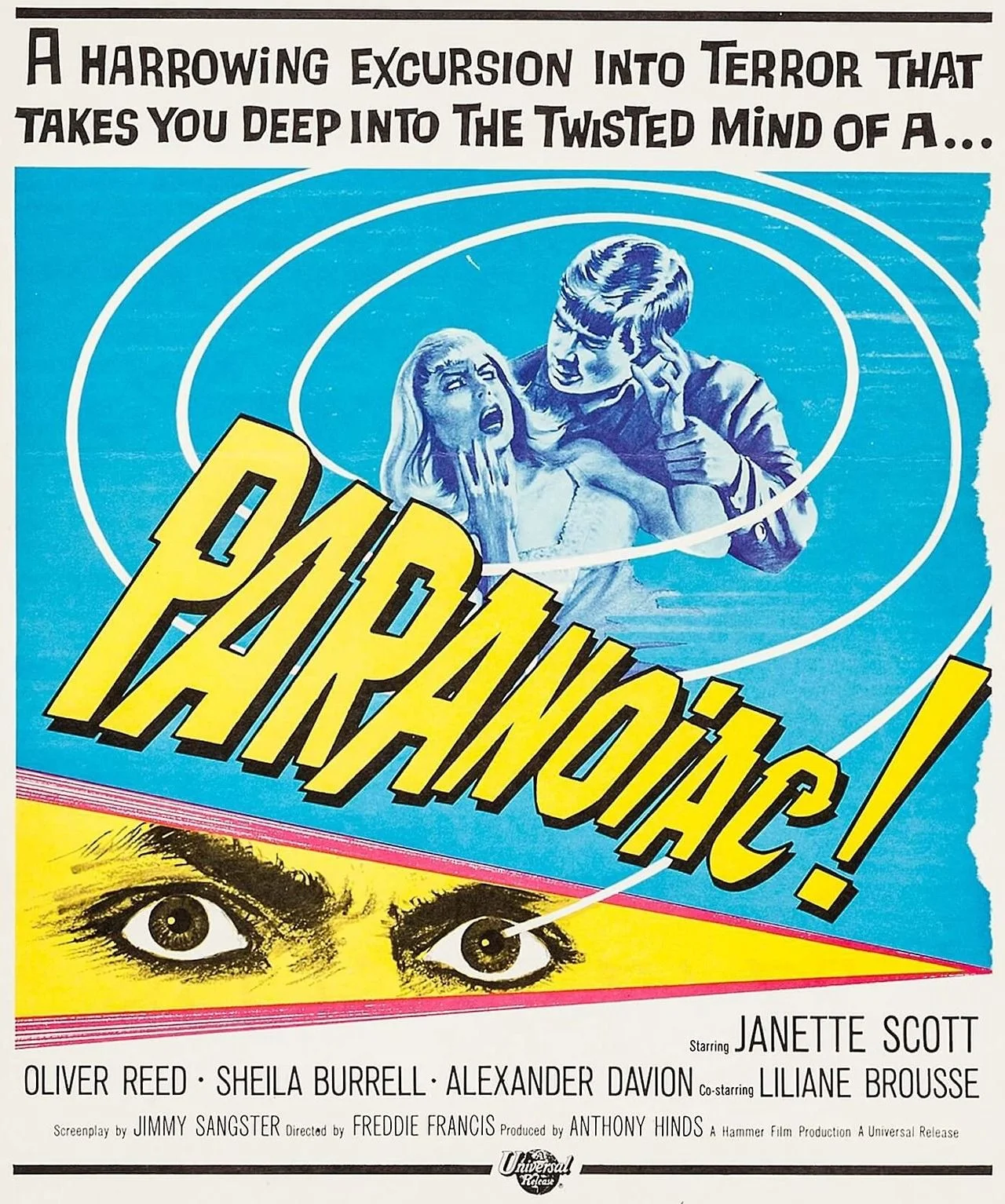 Dark, brooding, combative, sexy, and absolutely talented, Oliver Reed, once upon a time, was the rage of British
cinema. The most underrated Hammer Horror picture ever made, Paranoiac is a wonderful treat for fans and
newcomers alike. Oliver Reed is drop-dead gorgeous in black and white, and it's hard to take eyes off him.
Dark, brooding, combative, sexy, and absolutely talented, Oliver Reed, once upon a time, was the rage of British
cinema. The most underrated Hammer Horror picture ever made, Paranoiac is a wonderful treat for fans and
newcomers alike. Oliver Reed is drop-dead gorgeous in black and white, and it's hard to take eyes off him.
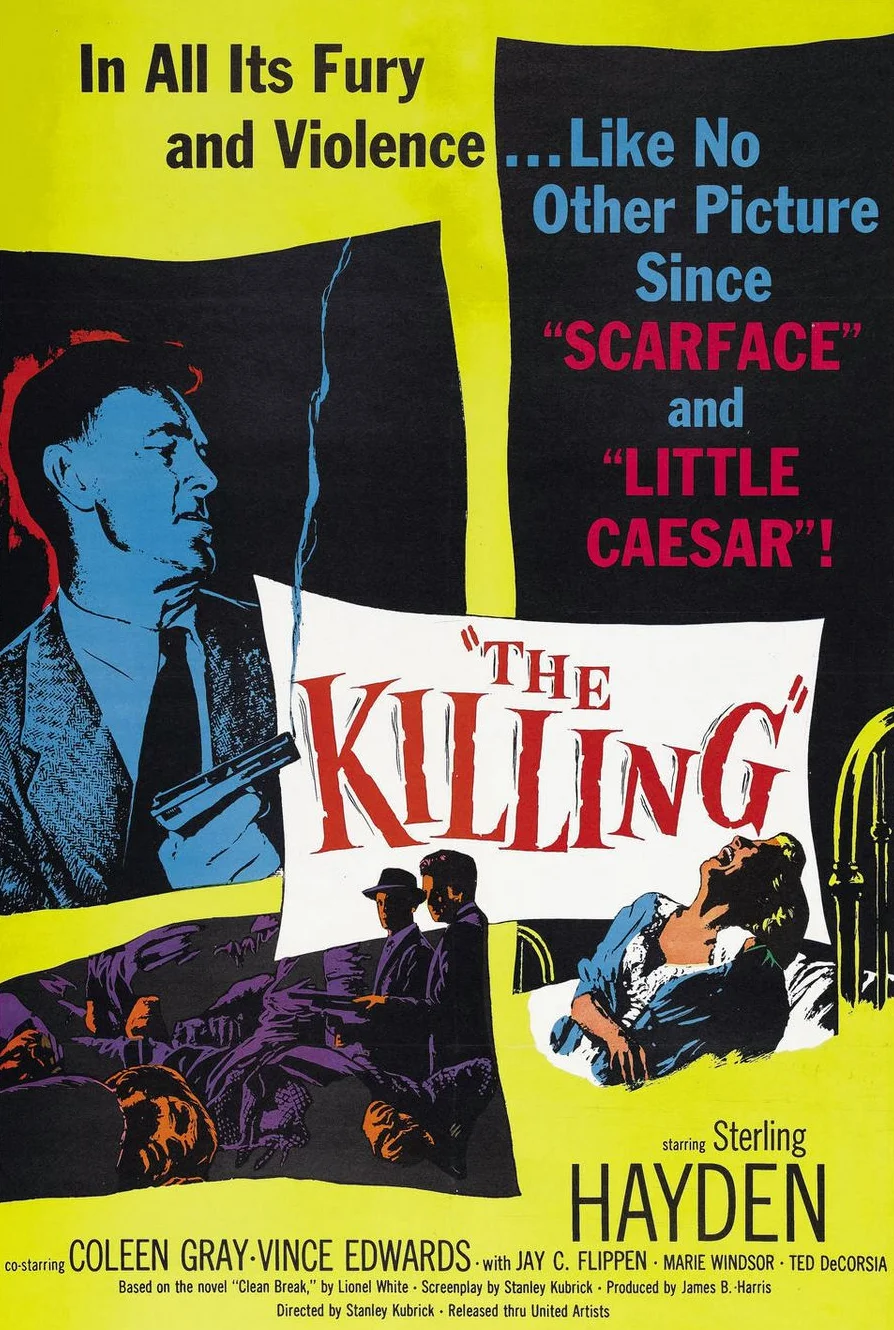 After directing a hokey picture called Killer's Kiss, Stanley Kubrick decided to improve his
film noir technique more for The Killing. The results are better this time around. It's sharper,
fresher, and less corny than Killer's Kiss. Led by Sterling Hayden, the cast is wonderful through the
unfolding of a drama that's akin to John Huston's film noir masterpiece The Asphalt Jungle.
After directing a hokey picture called Killer's Kiss, Stanley Kubrick decided to improve his
film noir technique more for The Killing. The results are better this time around. It's sharper,
fresher, and less corny than Killer's Kiss. Led by Sterling Hayden, the cast is wonderful through the
unfolding of a drama that's akin to John Huston's film noir masterpiece The Asphalt Jungle.
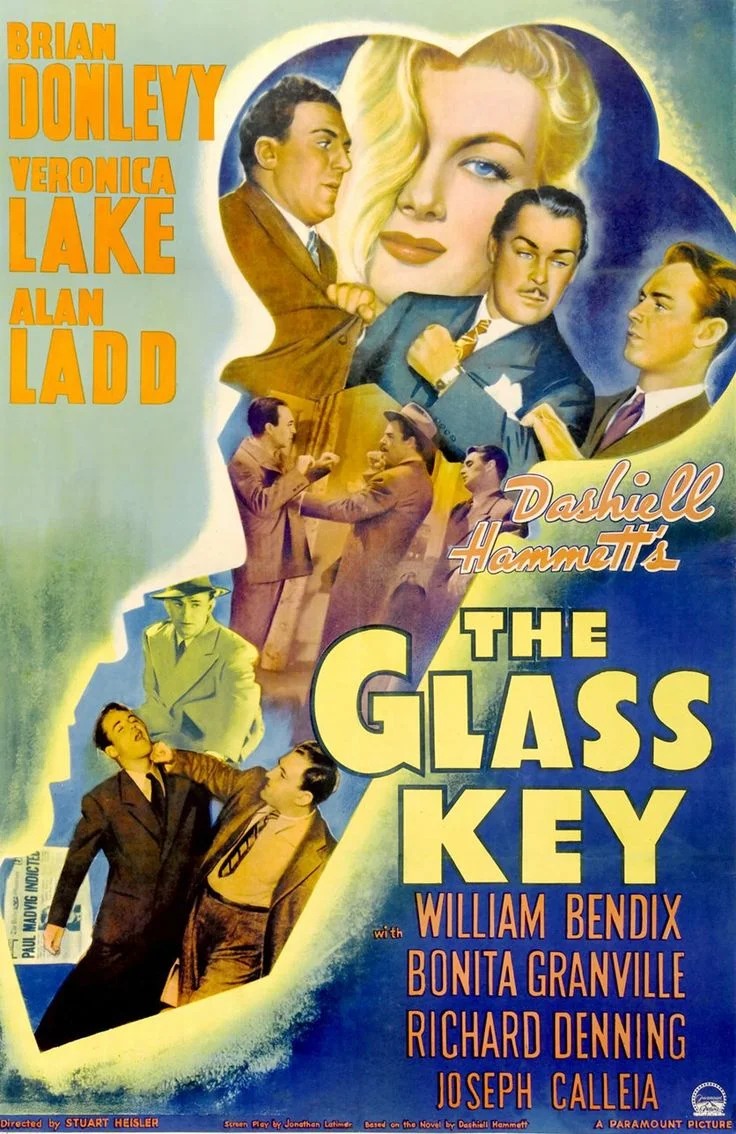 A good, tough, and gritty film noir, the story is labyrinthic to follow. There are a lot of noir
elements in The Glass Key that make it a treat to watch: tough characters, seedy behaviors, mysterious
circumstances, underworld dealings, dark environs, shaky loyalties, fatal decisions, and violent confrontations
with plenty of action.
A good, tough, and gritty film noir, the story is labyrinthic to follow. There are a lot of noir
elements in The Glass Key that make it a treat to watch: tough characters, seedy behaviors, mysterious
circumstances, underworld dealings, dark environs, shaky loyalties, fatal decisions, and violent confrontations
with plenty of action.
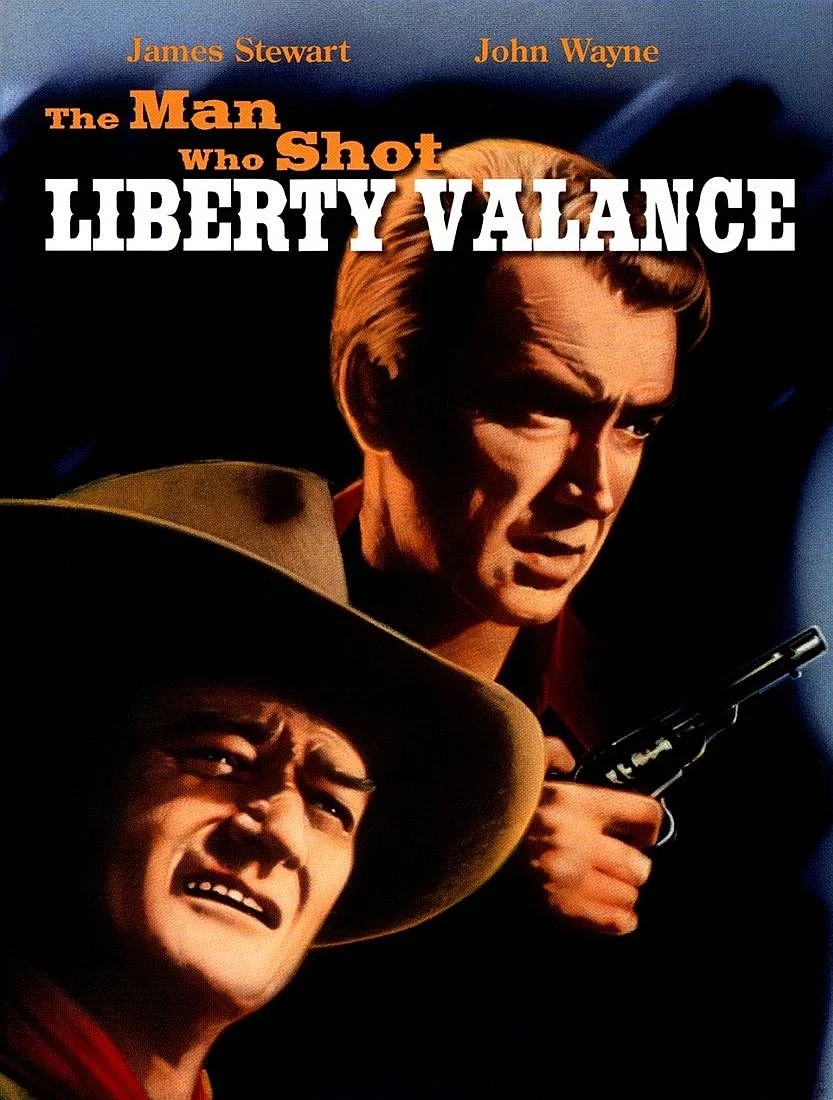 "When the legend becomes fact, print the legend." The Man Who Shot Liberty Valance is one of the best
Western noir pictures ever made. The plot, the performances, the setting, the atmosphere, the screenplay,
and the direction are phenomenal. John Wayne is brilliant, and John Ford's direction is mesmerizing. And how the
story unfolds: the hero shoots the villain dead and the other guy gets the girl.
"When the legend becomes fact, print the legend." The Man Who Shot Liberty Valance is one of the best
Western noir pictures ever made. The plot, the performances, the setting, the atmosphere, the screenplay,
and the direction are phenomenal. John Wayne is brilliant, and John Ford's direction is mesmerizing. And how the
story unfolds: the hero shoots the villain dead and the other guy gets the girl.
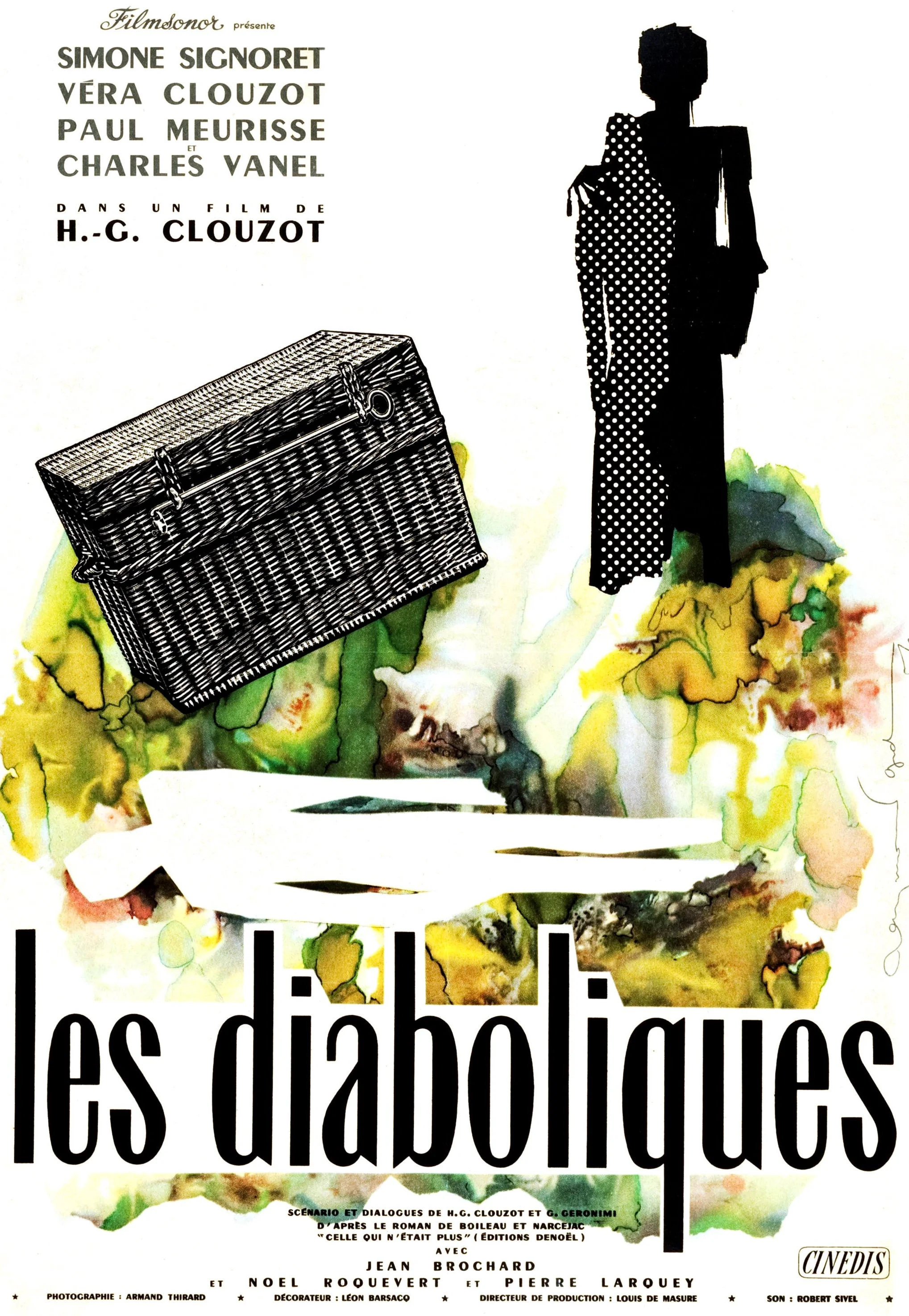 Henri-Georges Clouzot and Alfred Hitchcock were in a race to buy the film rights to a novel called
Celle qui n'était plus by Pierre Boileau and Thomas Narcejac, and the former emerged as the winner.
As a result, he directed the award-winning French thriller that became Les diaboliques, aka
The Devils, making the Master of Suspense envious, but it did have an enormous influence on Psycho.
Henri-Georges Clouzot and Alfred Hitchcock were in a race to buy the film rights to a novel called
Celle qui n'était plus by Pierre Boileau and Thomas Narcejac, and the former emerged as the winner.
As a result, he directed the award-winning French thriller that became Les diaboliques, aka
The Devils, making the Master of Suspense envious, but it did have an enormous influence on Psycho.
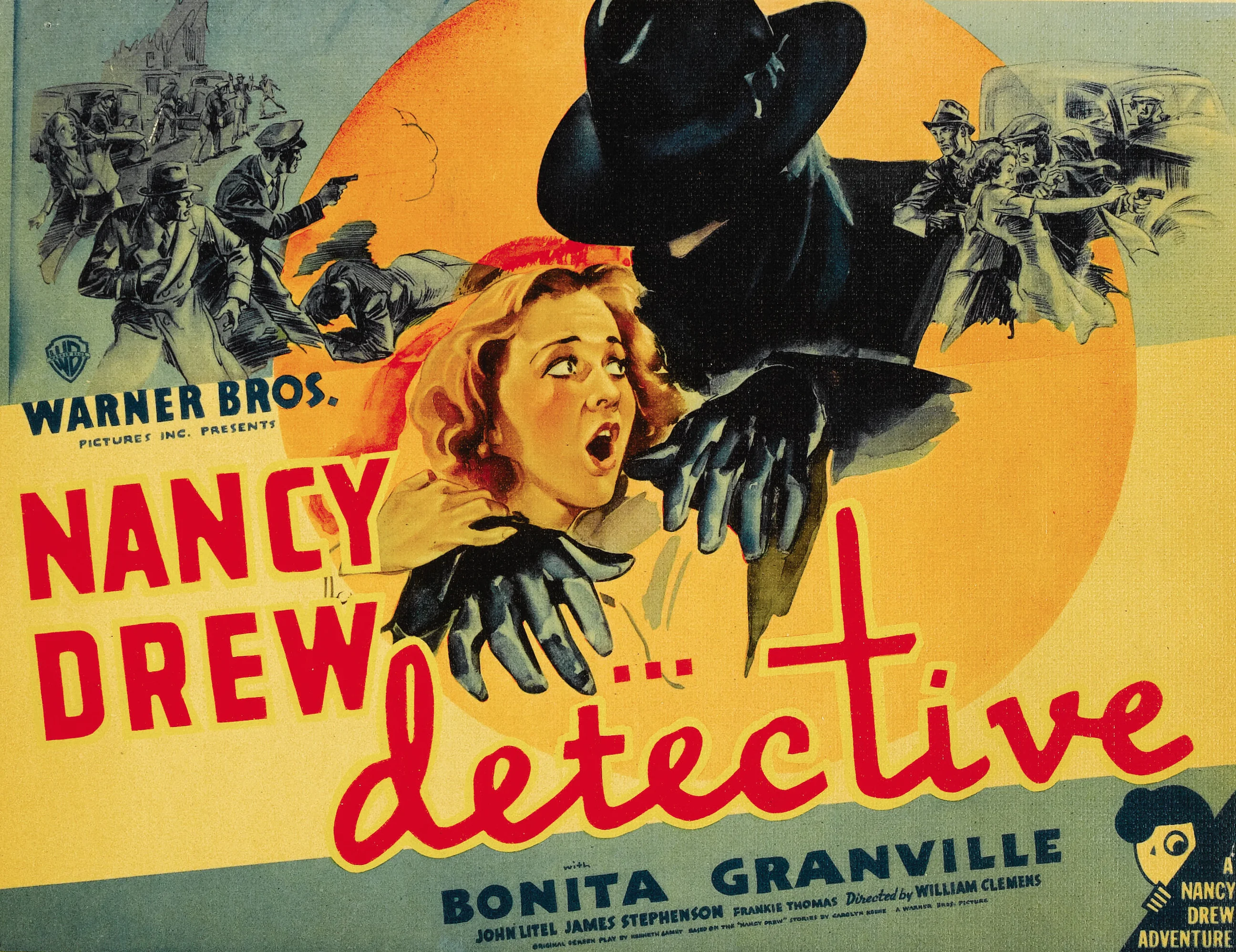 Nancy Drew... Detective and the following three sequels are charming whodunnit mystery pictures with
great lines. Bonita Granville and Frankie Thomas are excellent together and deserve Oscar nominations. It's
difficult to beat their chemistry. A lot of the action they generate is just pure old-fashioned fun.
Nancy Drew... Detective and the following three sequels are charming whodunnit mystery pictures with
great lines. Bonita Granville and Frankie Thomas are excellent together and deserve Oscar nominations. It's
difficult to beat their chemistry. A lot of the action they generate is just pure old-fashioned fun.
 If there's one thing that's unusual about Lady in the Lake, the whole film was shot from the first-person
perspective, a cinema's first. But wow, the plot is convoluted as ever. Audrey Totter, who plays the sexy
Adrienne Fromsett, steals the show. She's drop-dead gorgeous, cunning, and alluring. Why...her character can be
the killer after all. Yet check out Lila Leeds. That's why Phillip Marlowe almost twisted his neck while eyeing
her until reaching the back of his head.
If there's one thing that's unusual about Lady in the Lake, the whole film was shot from the first-person
perspective, a cinema's first. But wow, the plot is convoluted as ever. Audrey Totter, who plays the sexy
Adrienne Fromsett, steals the show. She's drop-dead gorgeous, cunning, and alluring. Why...her character can be
the killer after all. Yet check out Lila Leeds. That's why Phillip Marlowe almost twisted his neck while eyeing
her until reaching the back of his head.
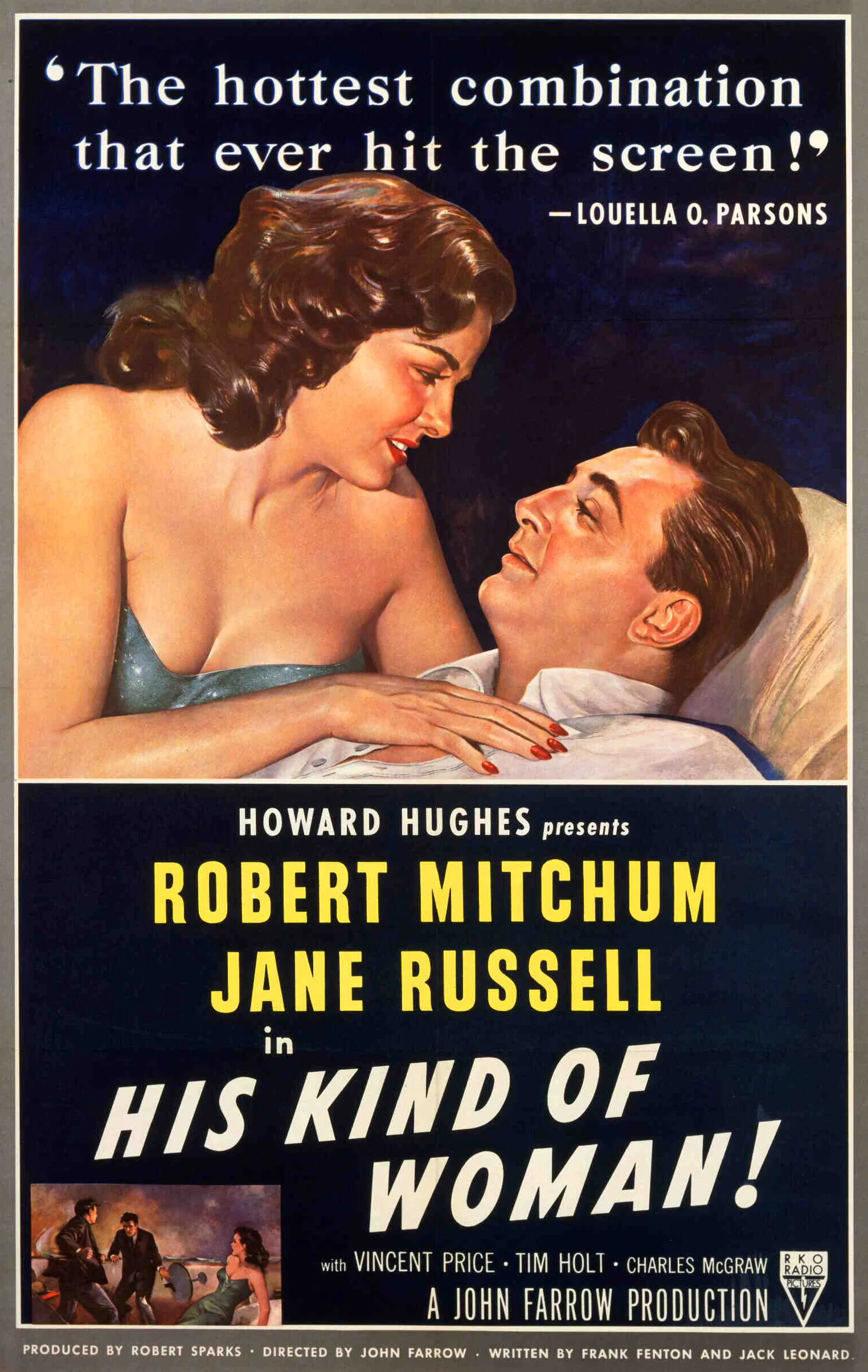 Robert Mitchum plays a professional gambler who's paid $50,000 to stay in Mexico for a year. That's the confusion
of the first hour. It wasn't getting anywhere, but as soon as the twist is revealed, the movie starts to improve.
There's a lot of talking to pass the time, and the chemistry between Robert Mitchum and Jane Russell is extremely
strong. Then, there's Vincent Price who ends up stealing the show.
Robert Mitchum plays a professional gambler who's paid $50,000 to stay in Mexico for a year. That's the confusion
of the first hour. It wasn't getting anywhere, but as soon as the twist is revealed, the movie starts to improve.
There's a lot of talking to pass the time, and the chemistry between Robert Mitchum and Jane Russell is extremely
strong. Then, there's Vincent Price who ends up stealing the show.
 Originally titled as Ten Little Niggers for the 1939 paperback version, the 1965 film remake of
And Then There Were None, Ten Little Indians is a superb murder mystery thriller. The feel,
the suspense, the mystery, the atmosphere, the setting, and the cast are perfect. The ending is fantastic
because it's the right kind of how such a movie should go out.
Originally titled as Ten Little Niggers for the 1939 paperback version, the 1965 film remake of
And Then There Were None, Ten Little Indians is a superb murder mystery thriller. The feel,
the suspense, the mystery, the atmosphere, the setting, and the cast are perfect. The ending is fantastic
because it's the right kind of how such a movie should go out.